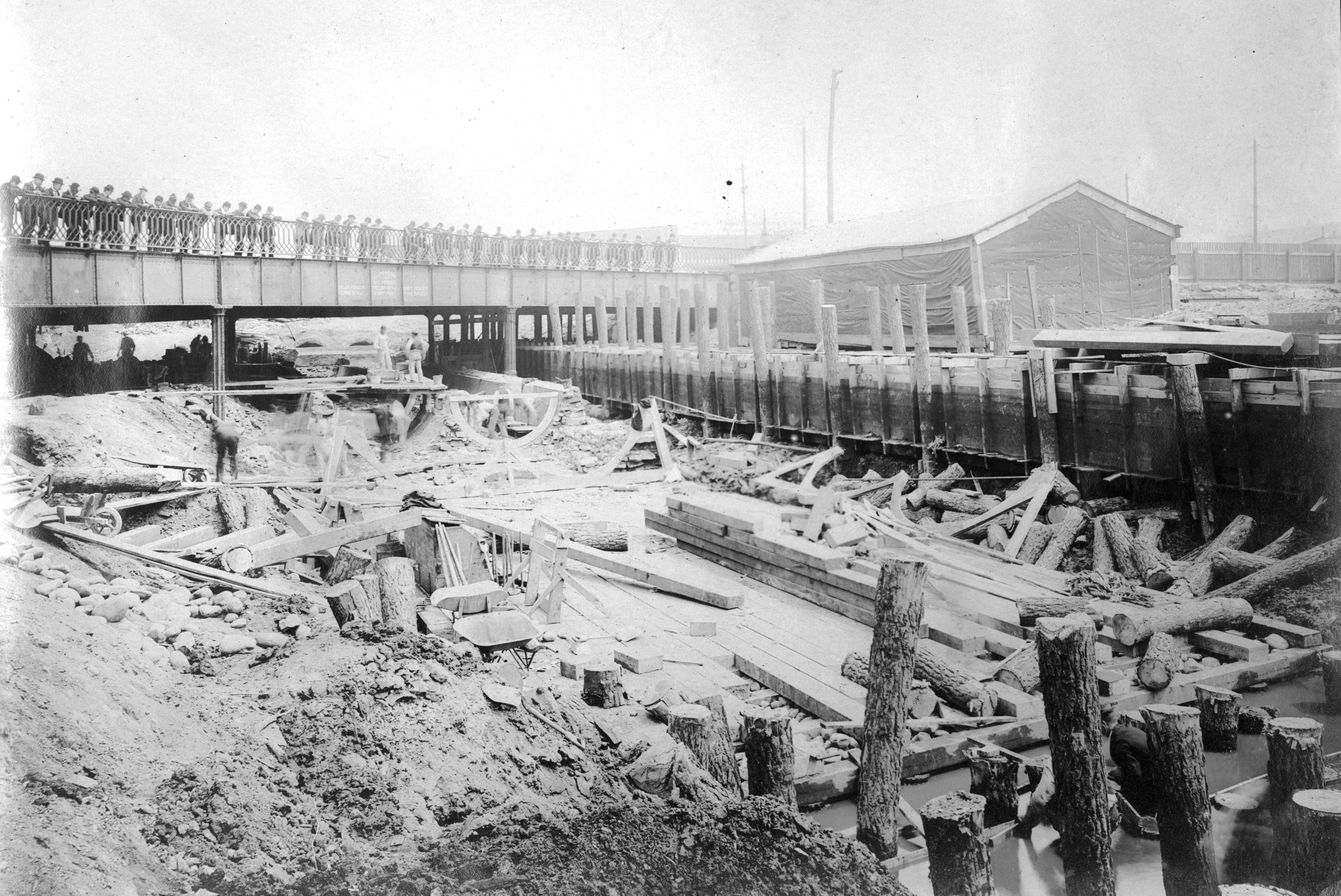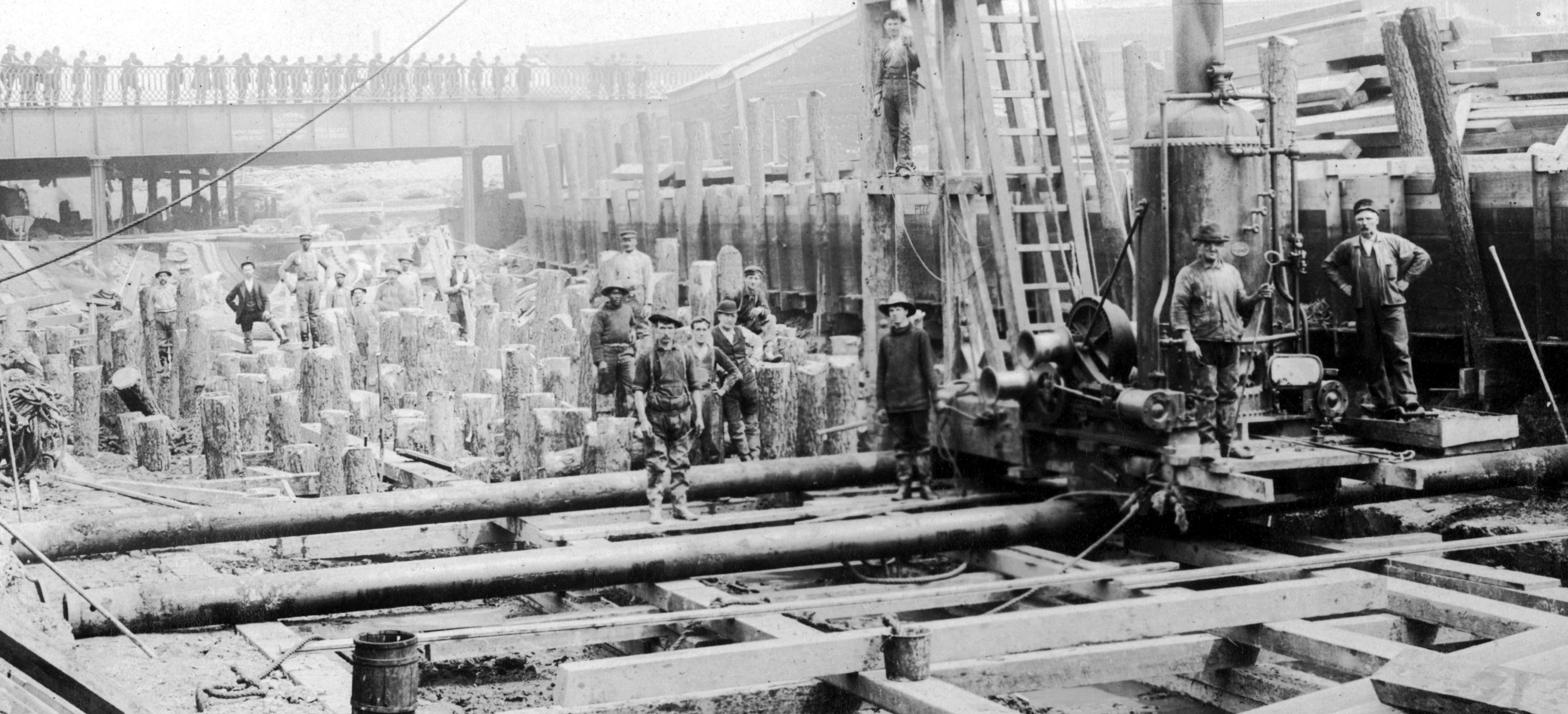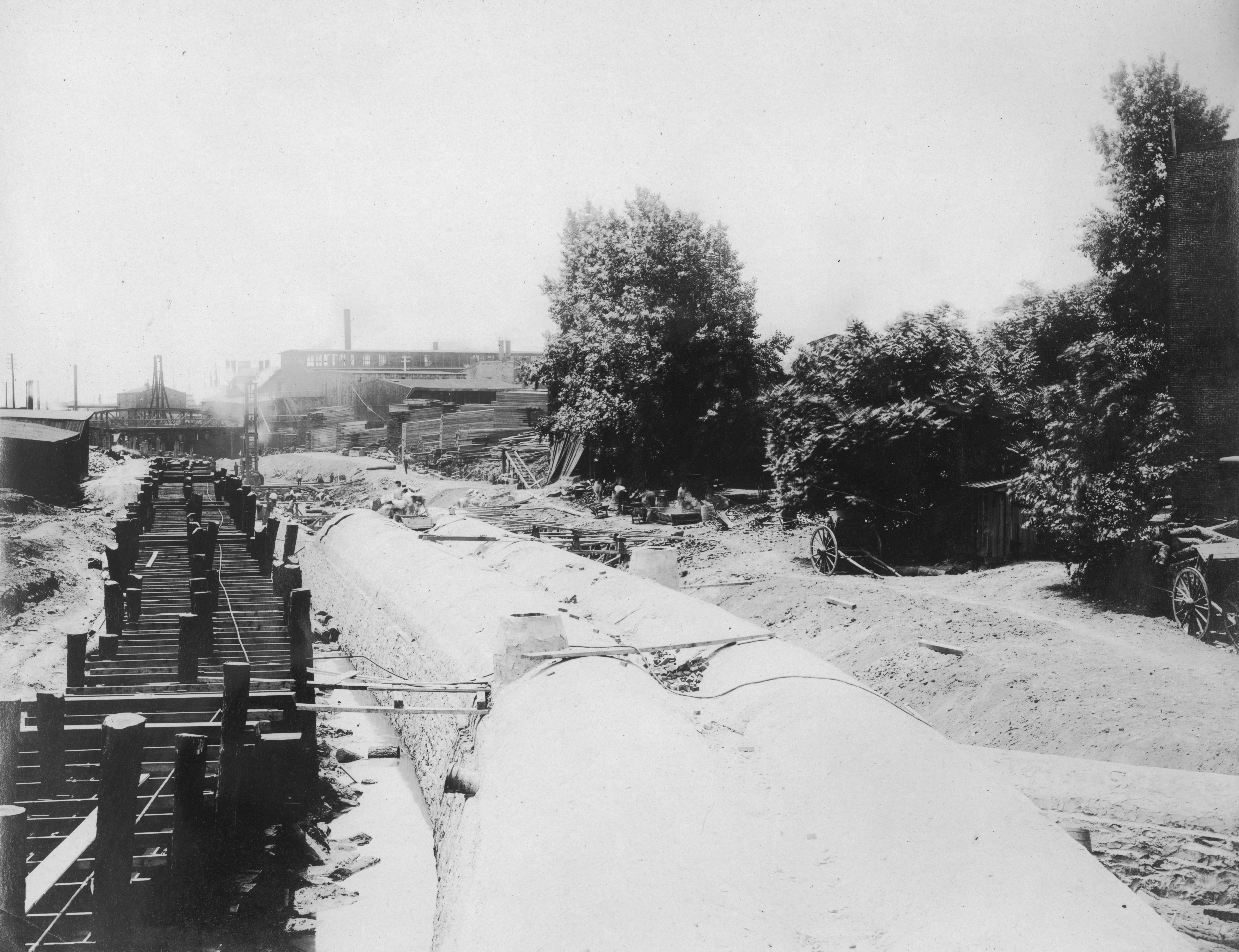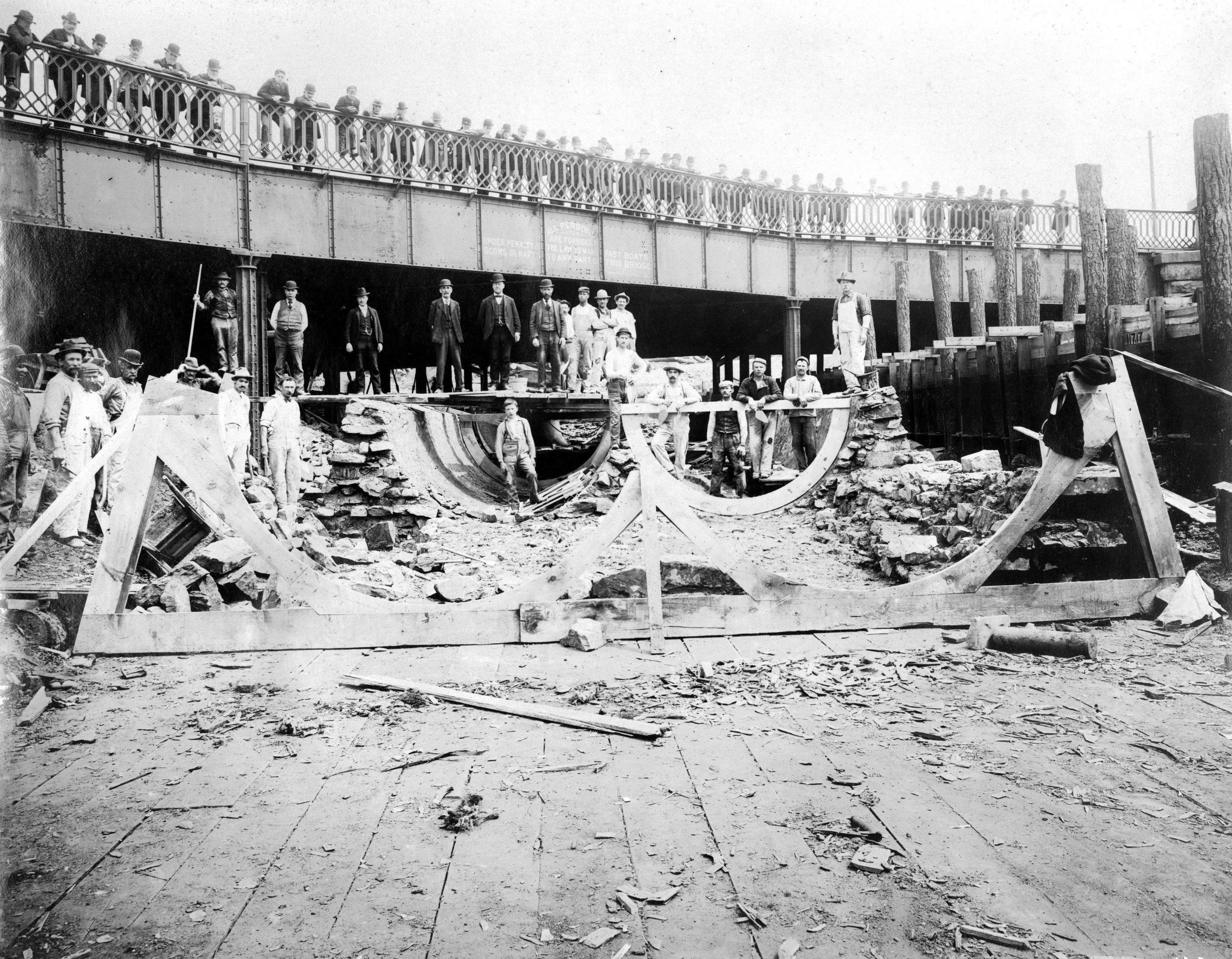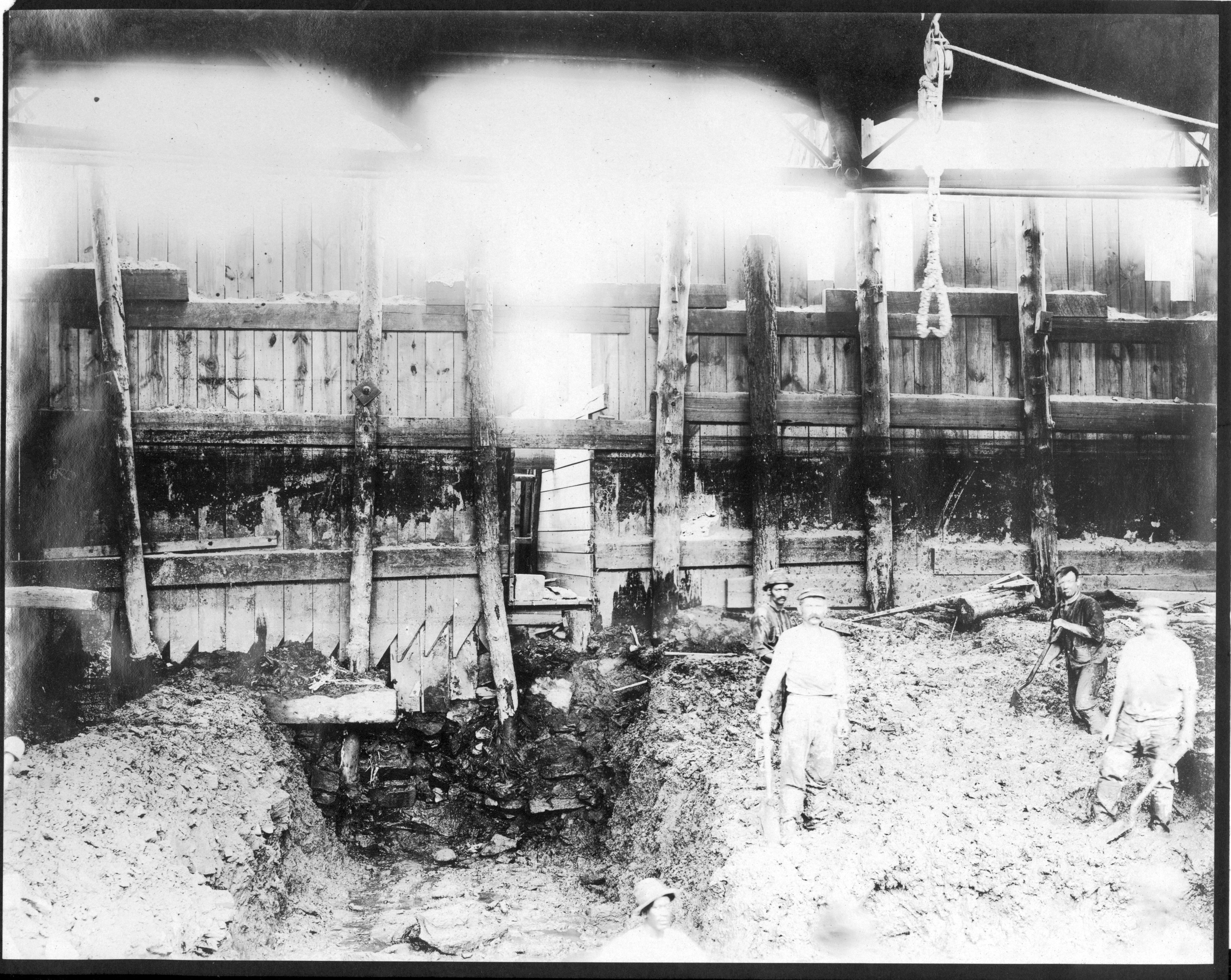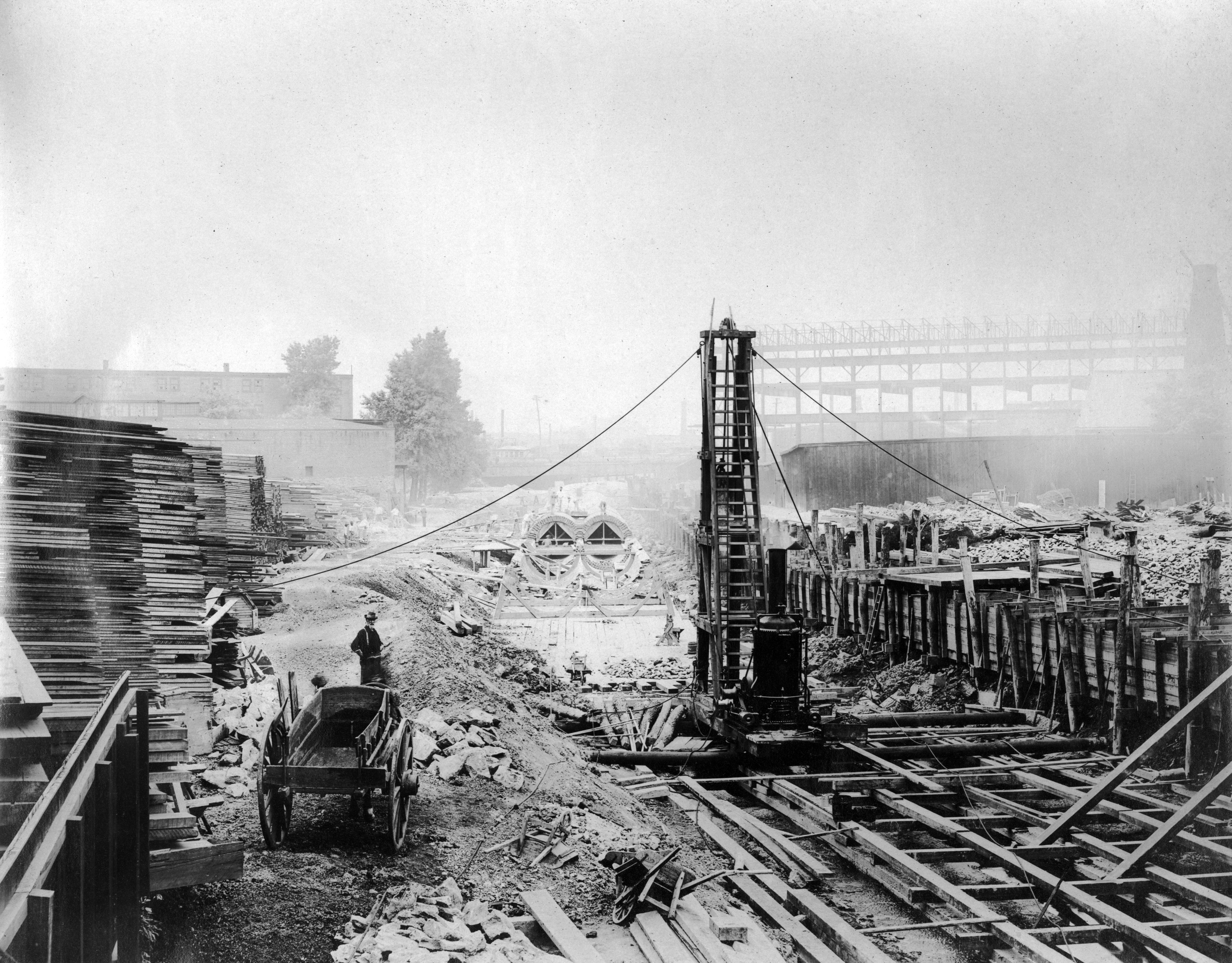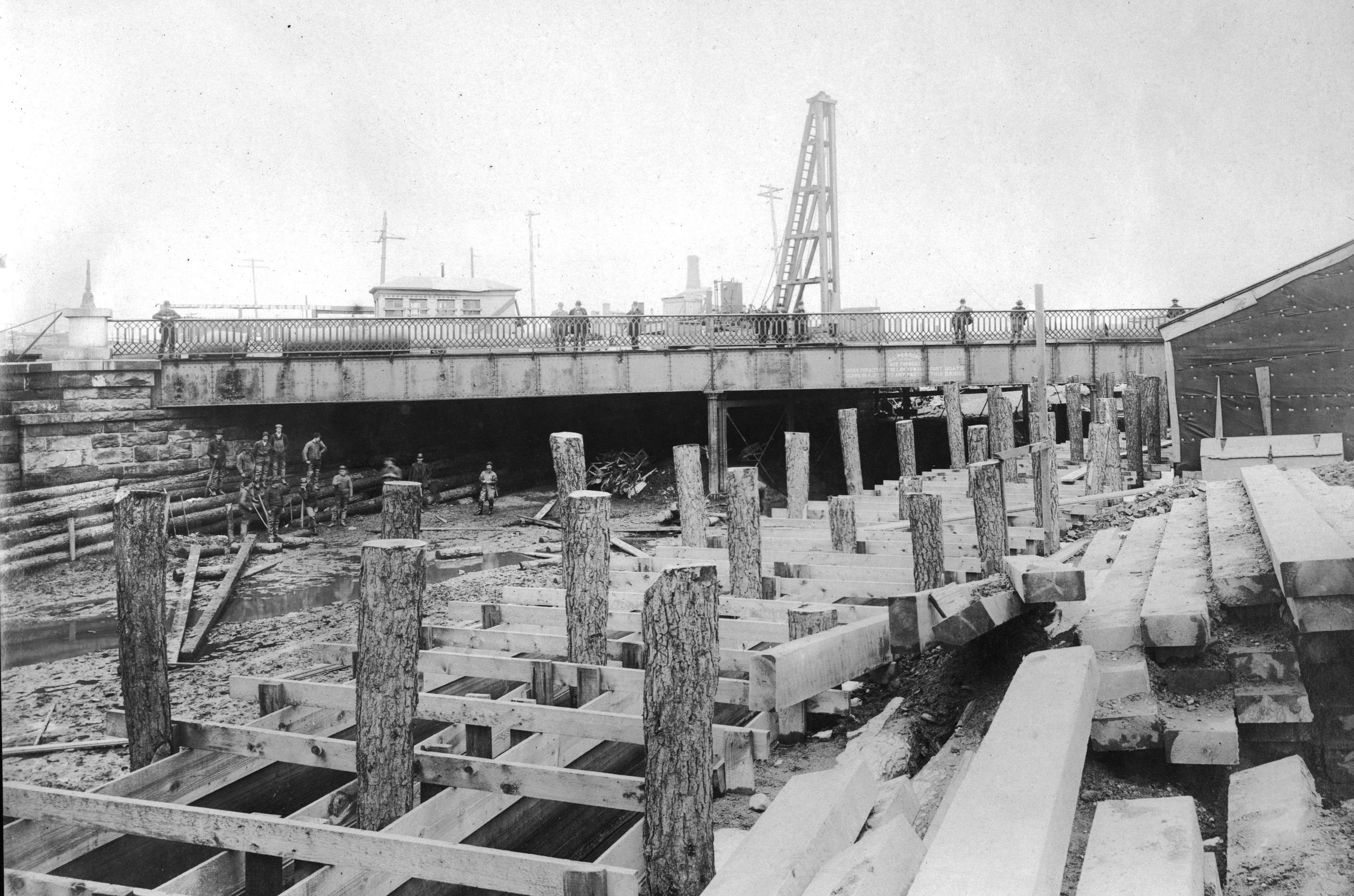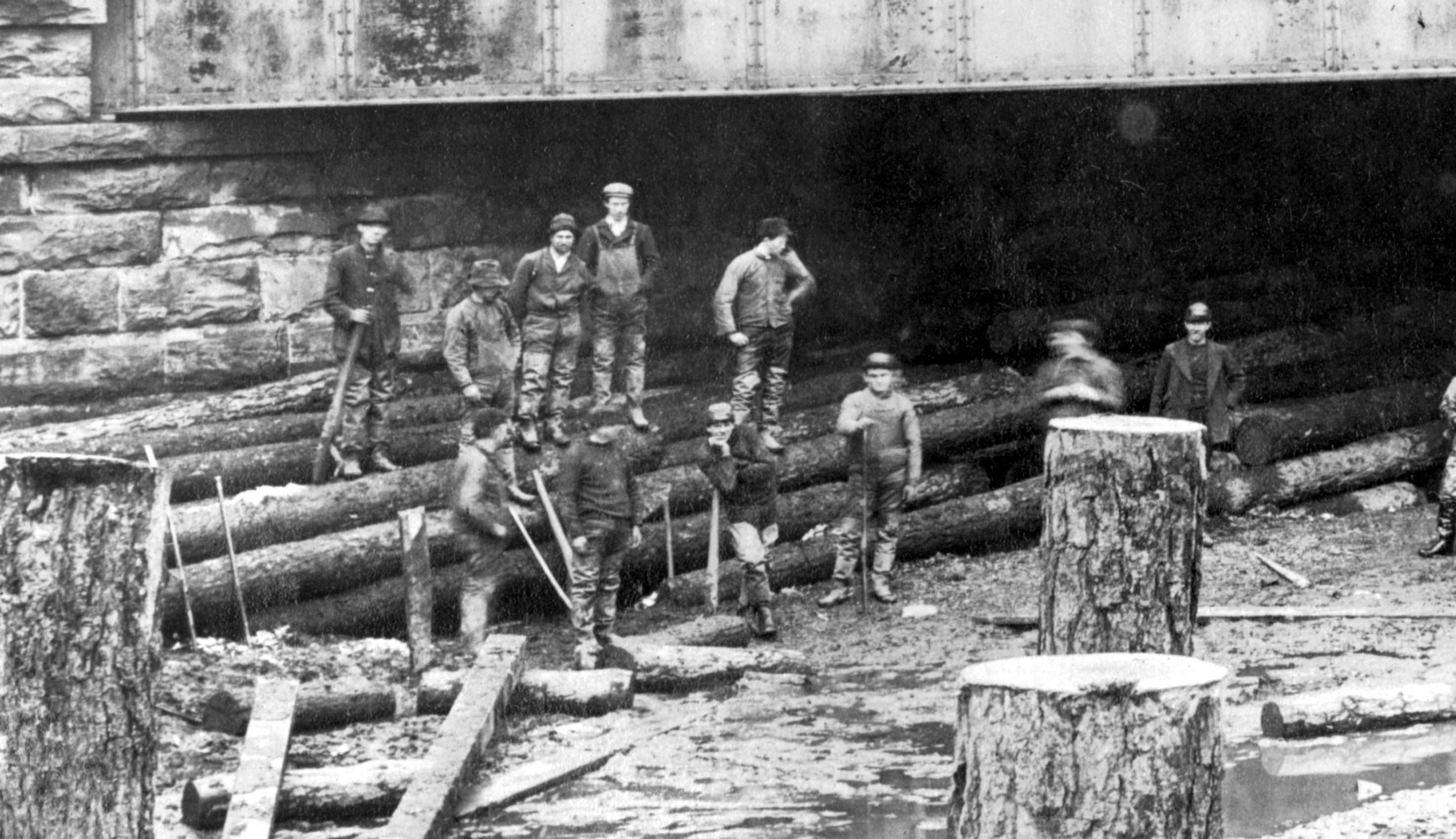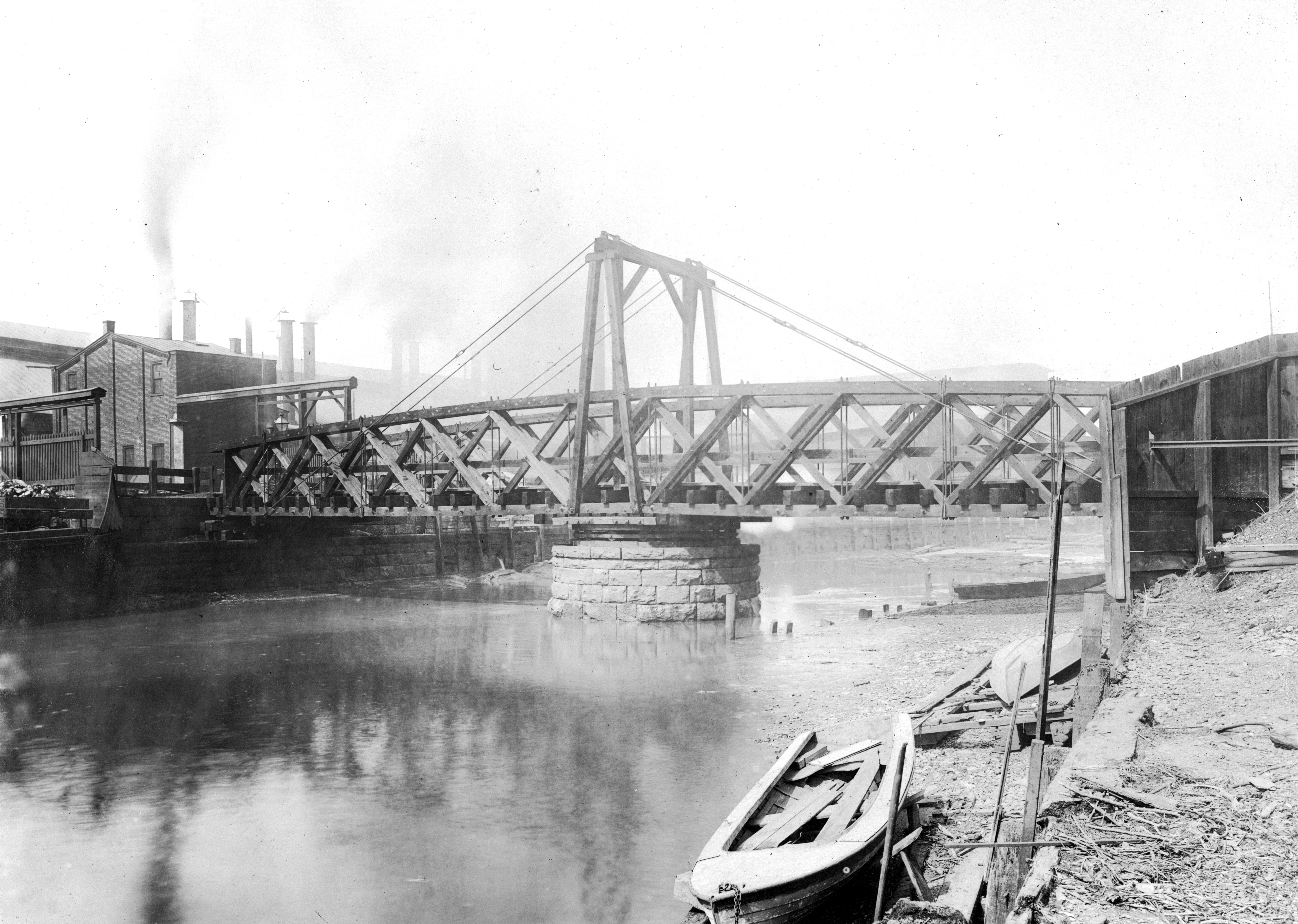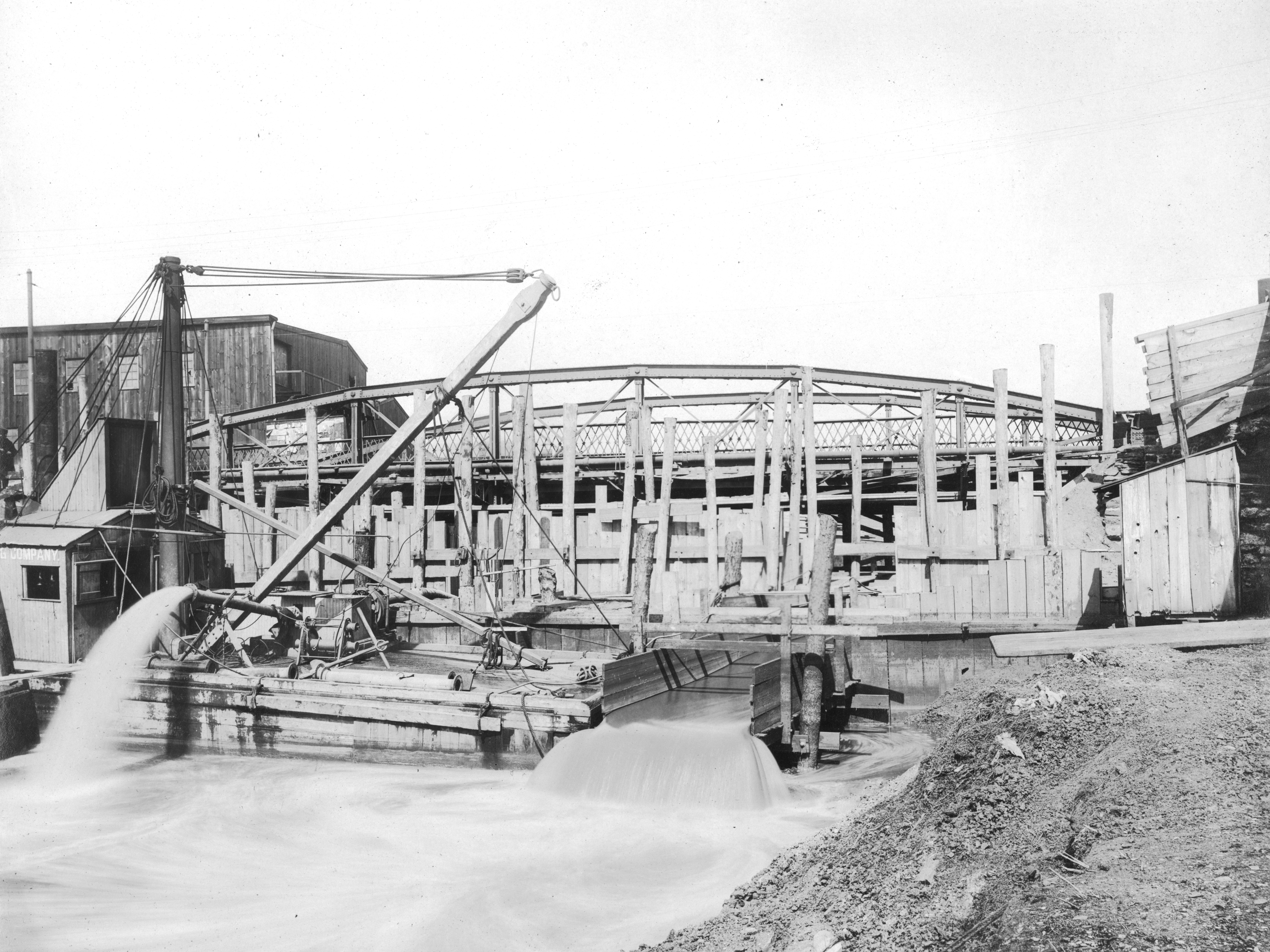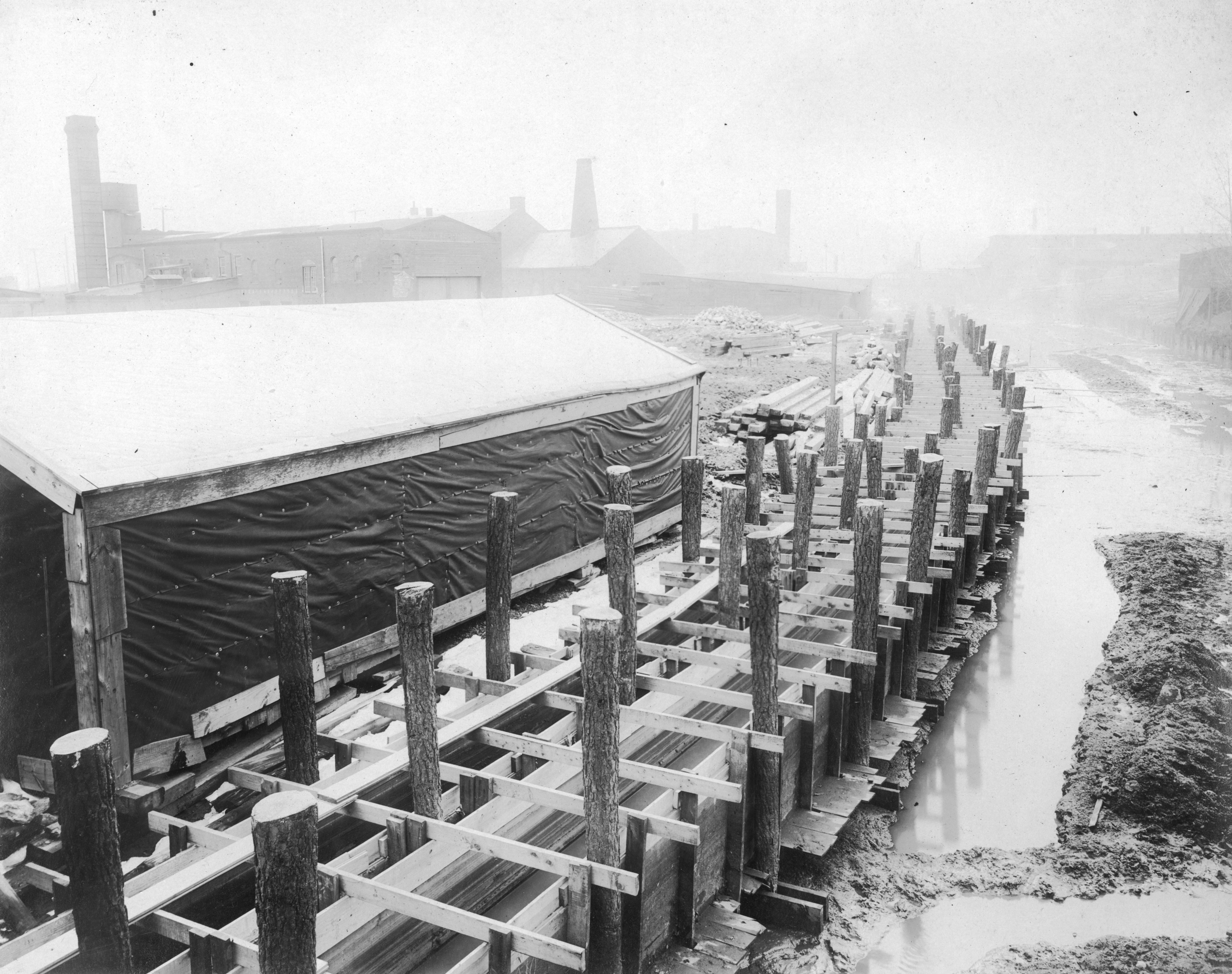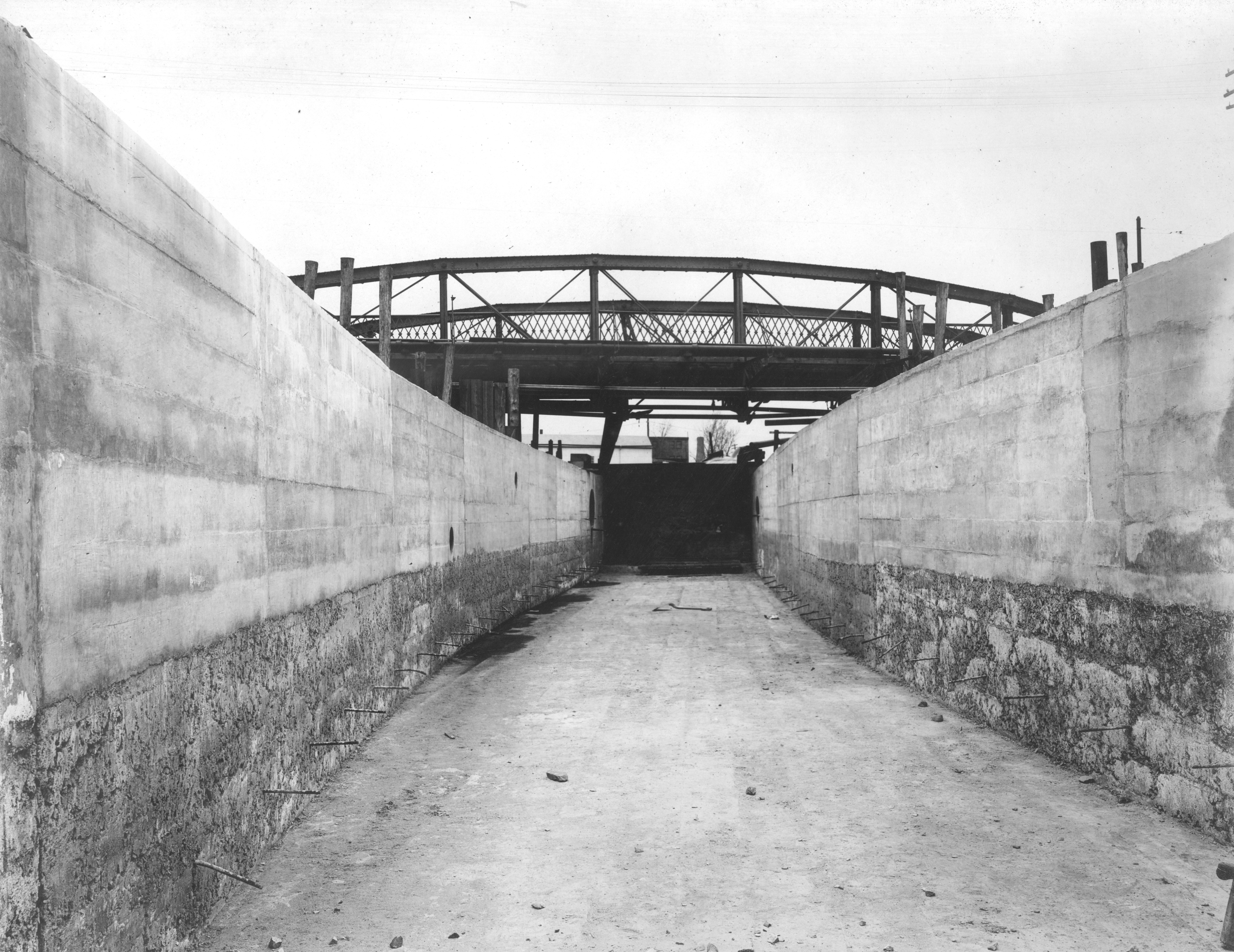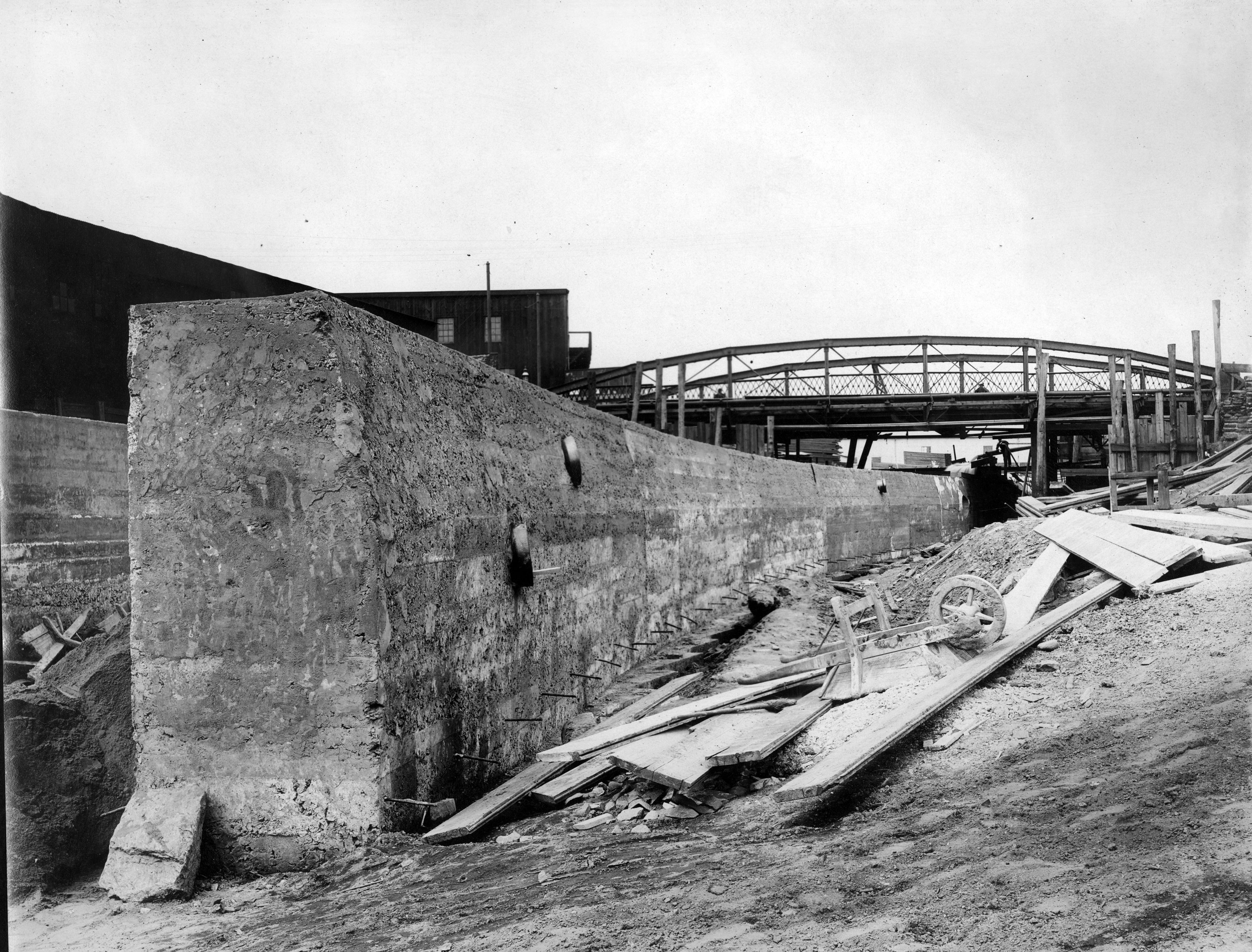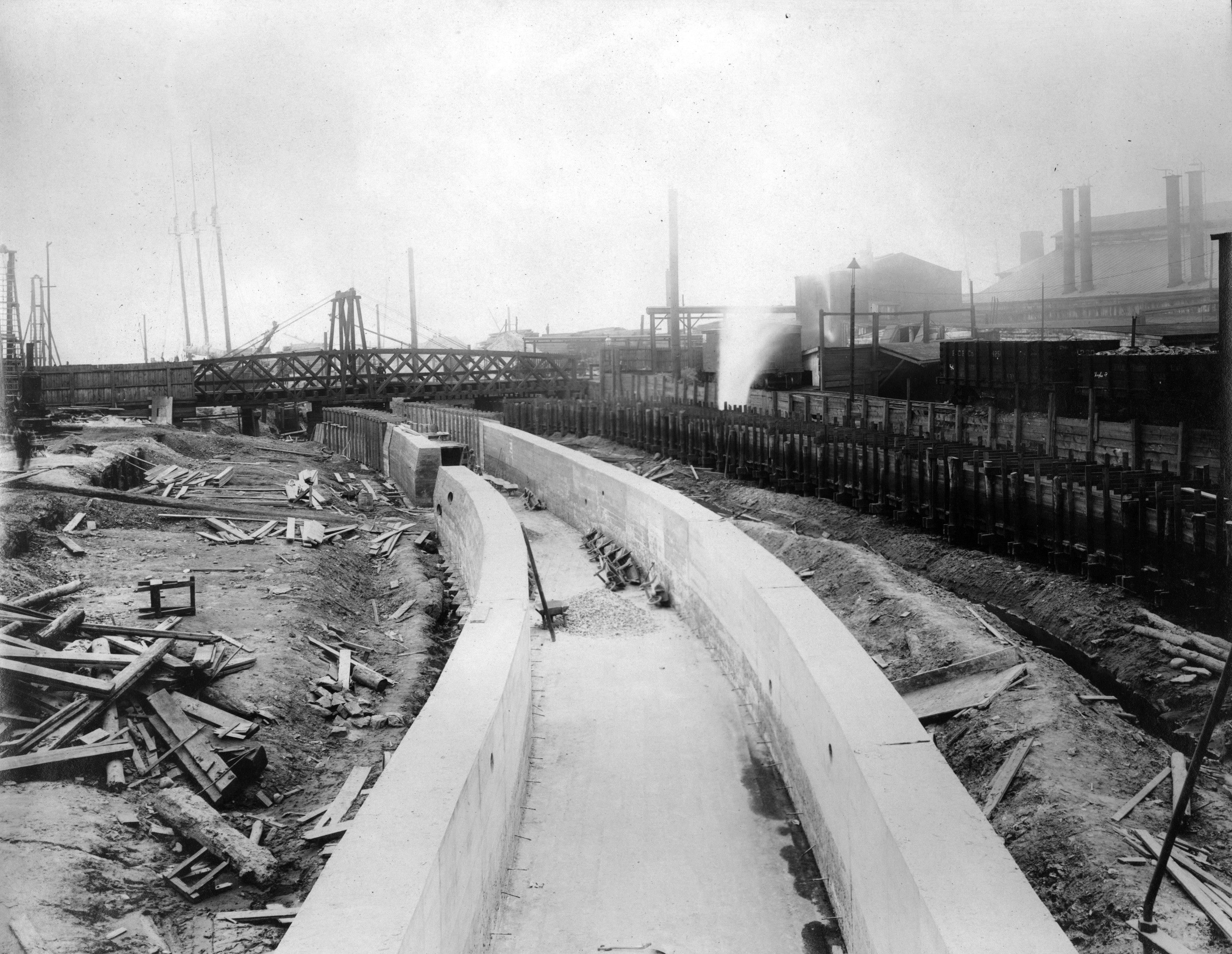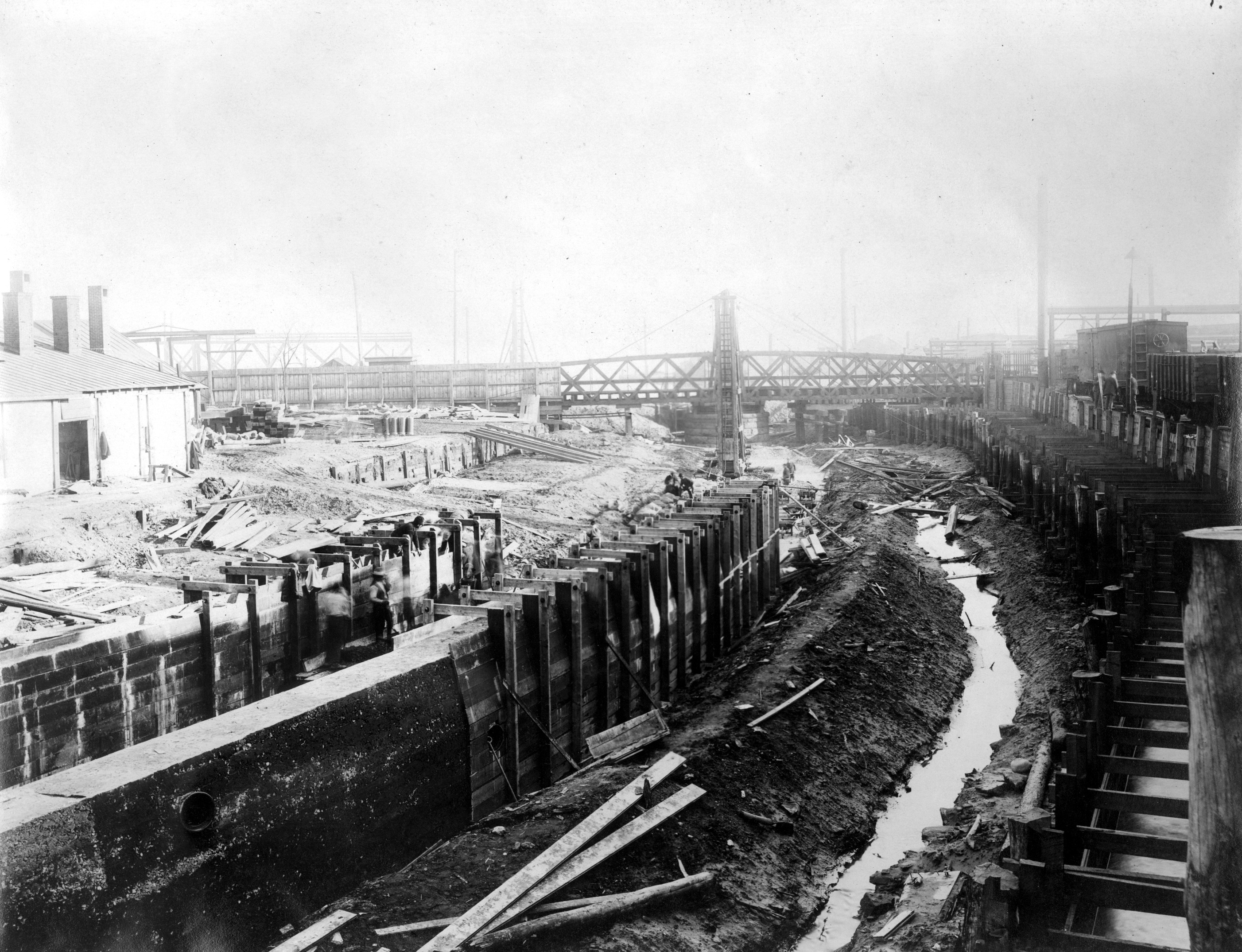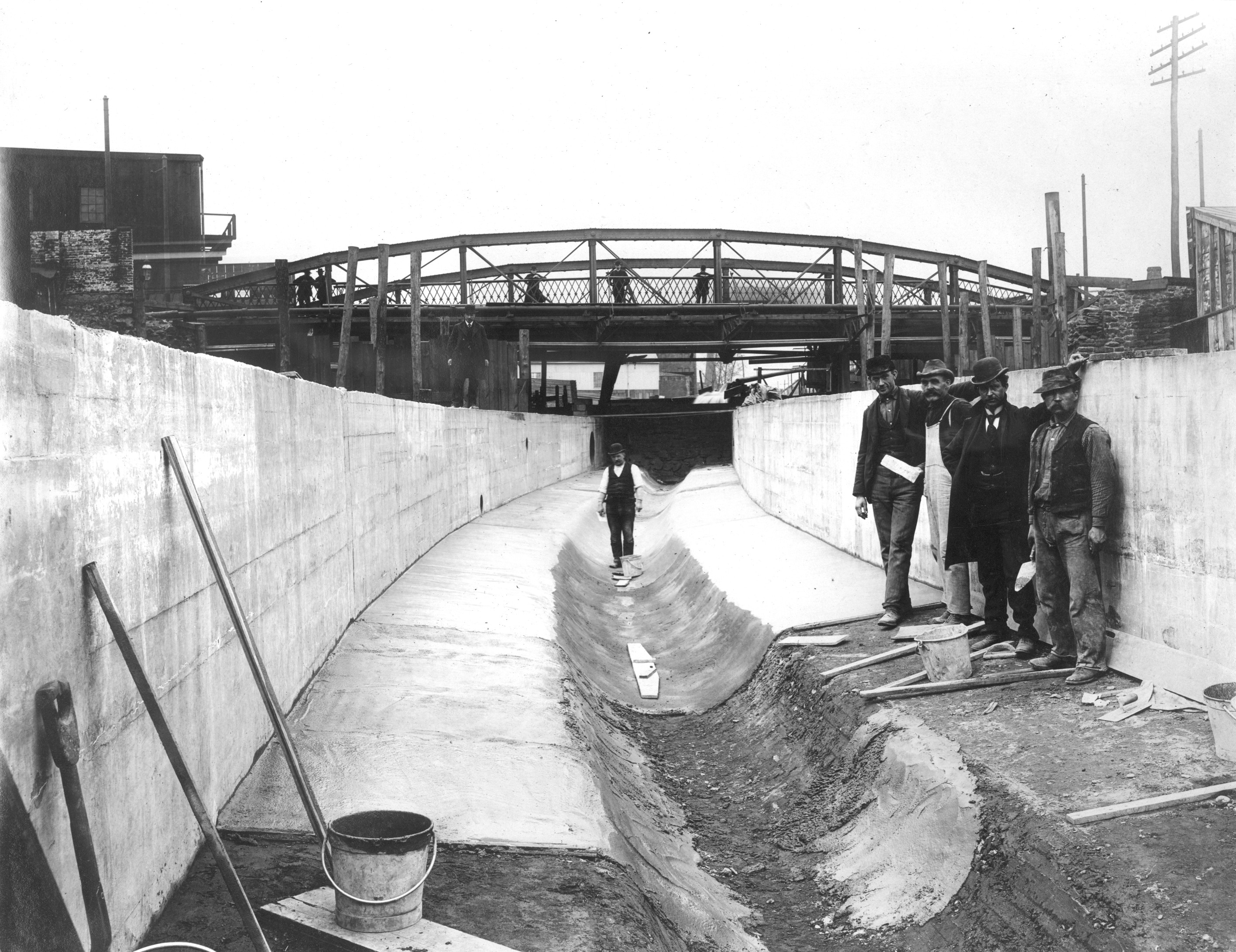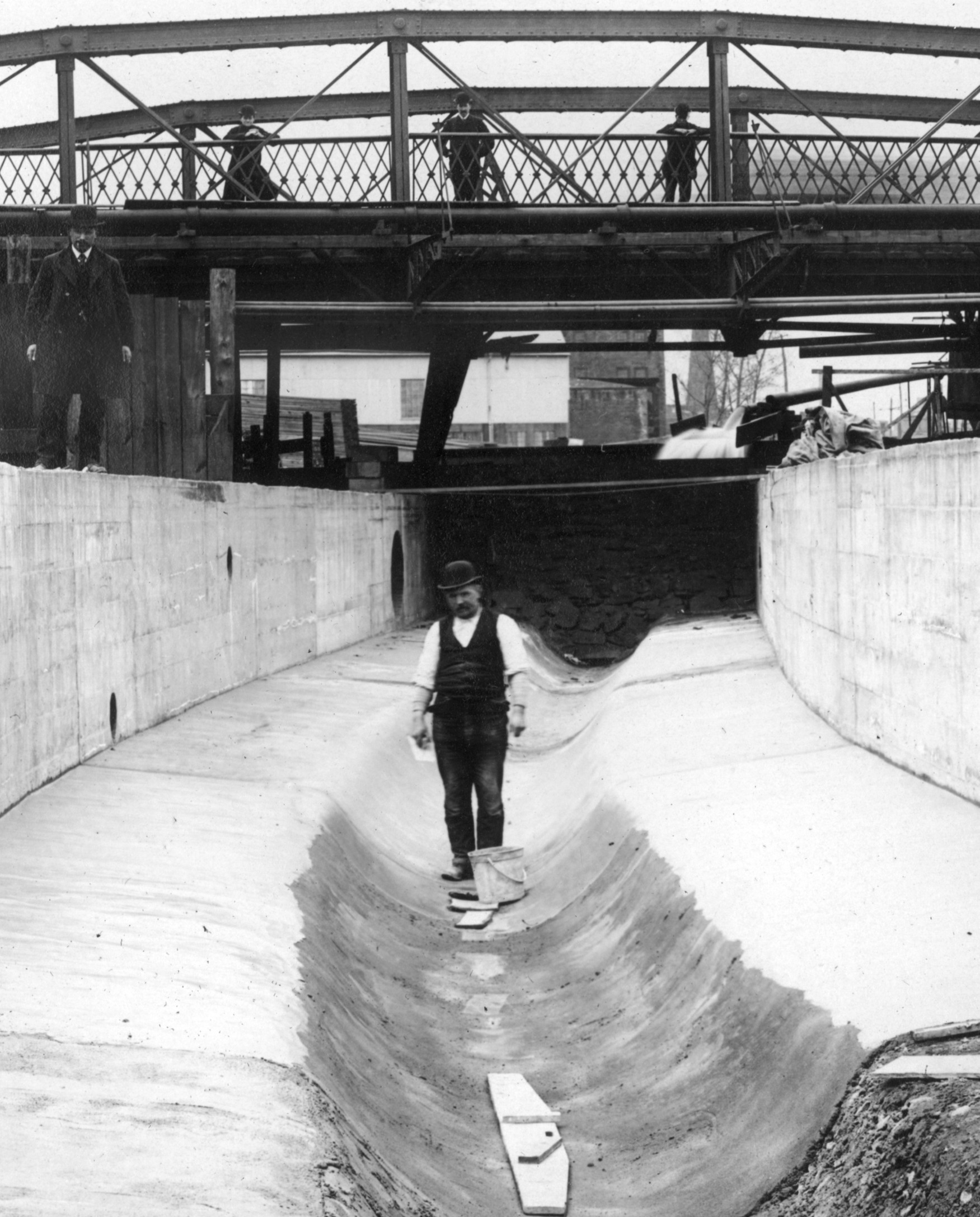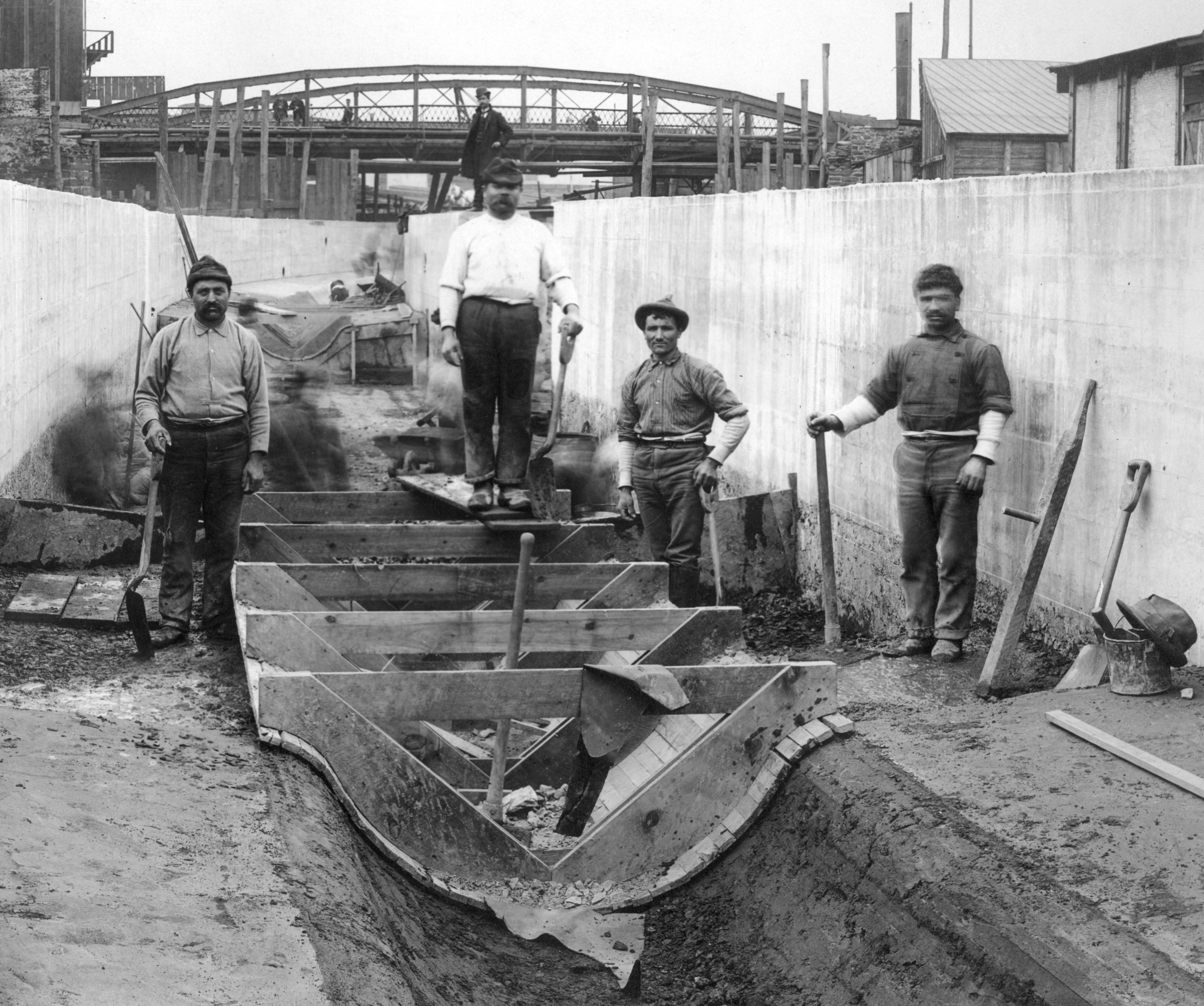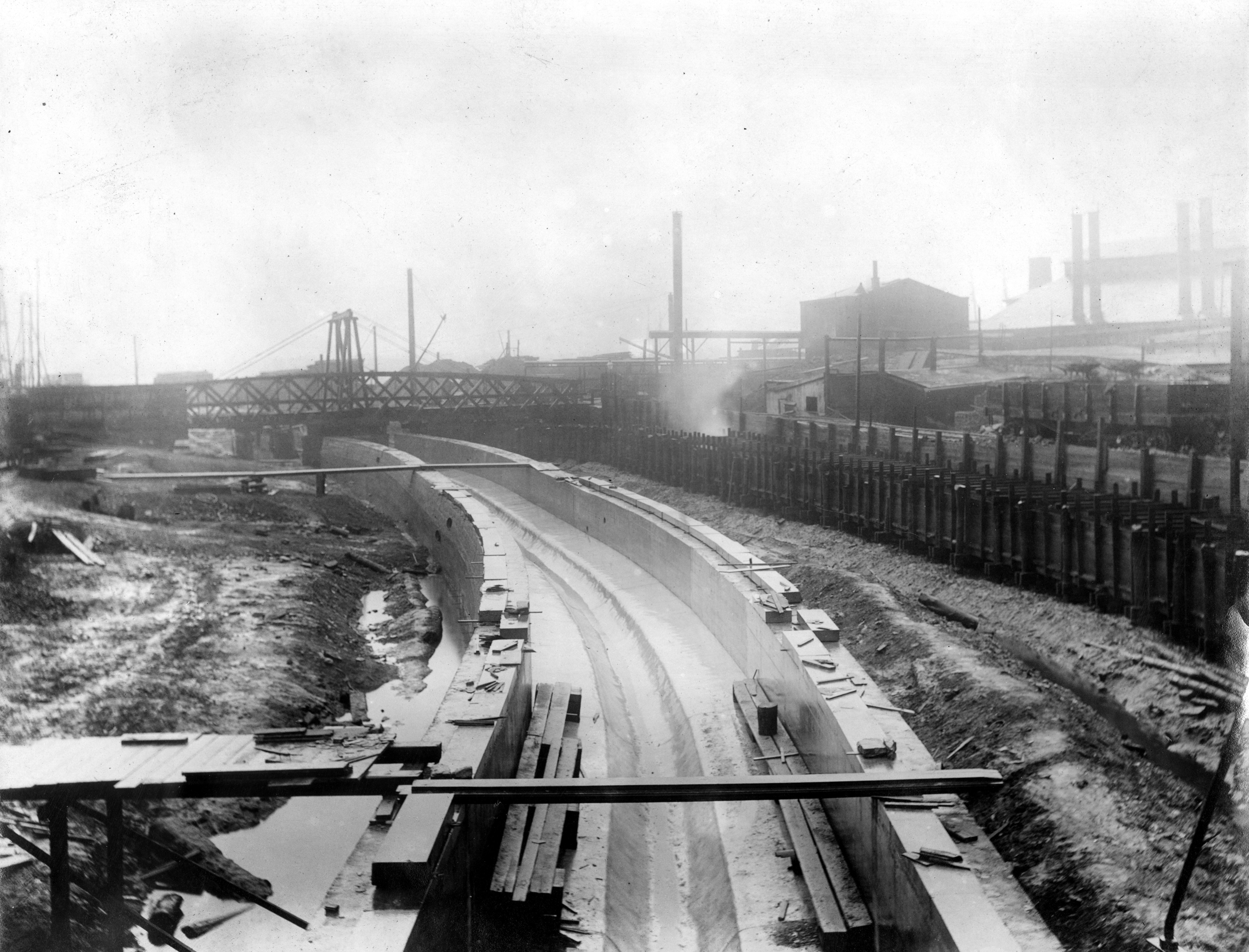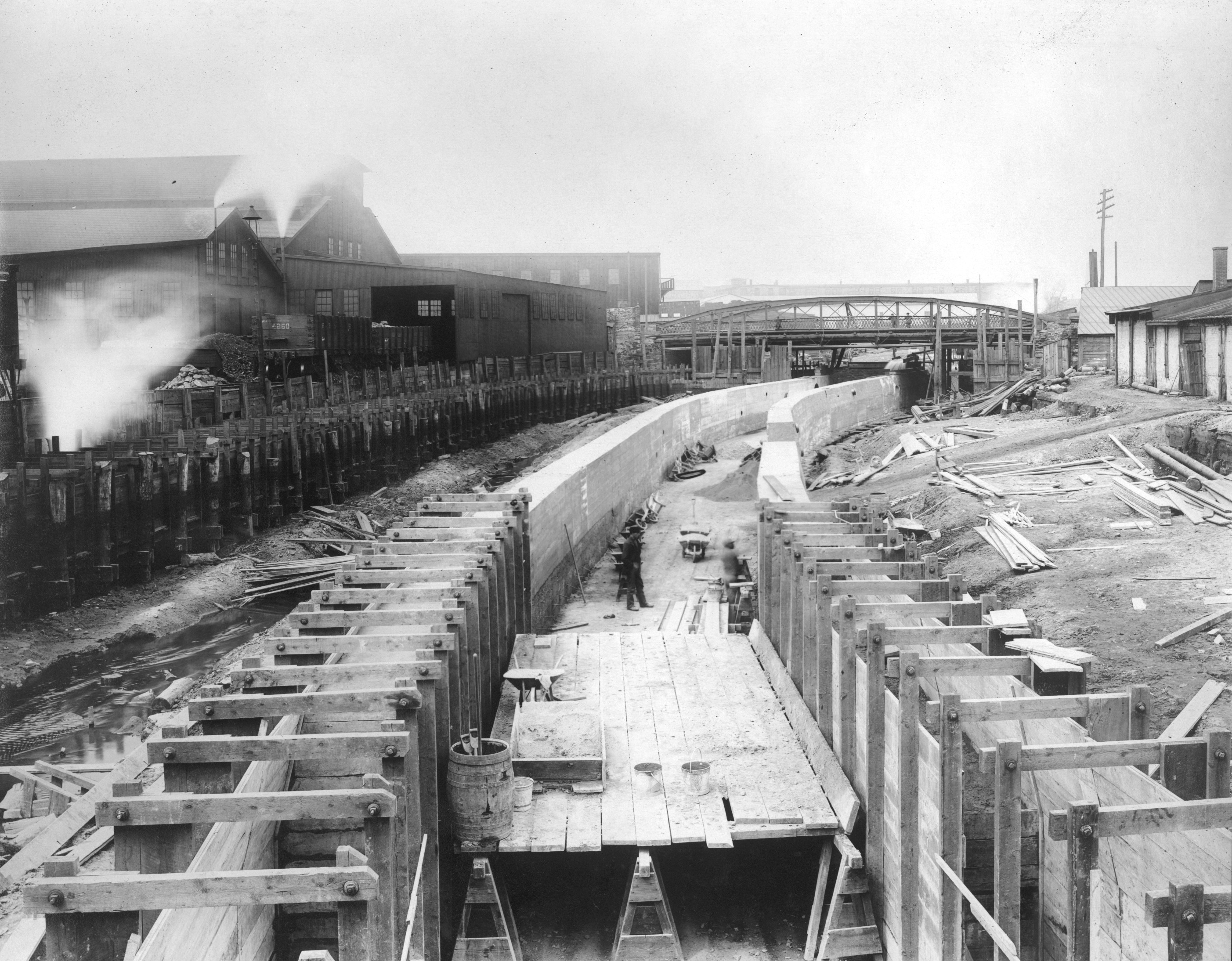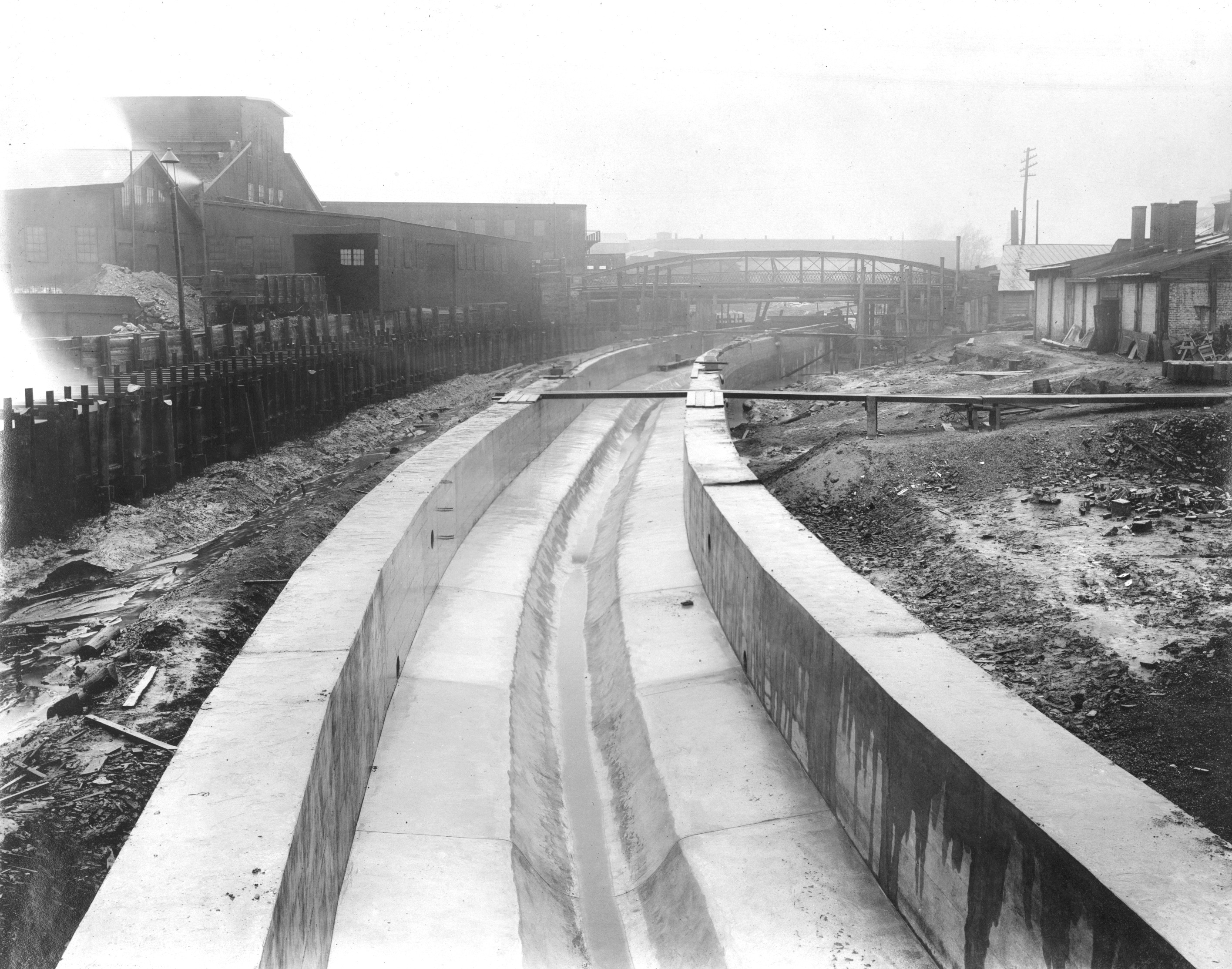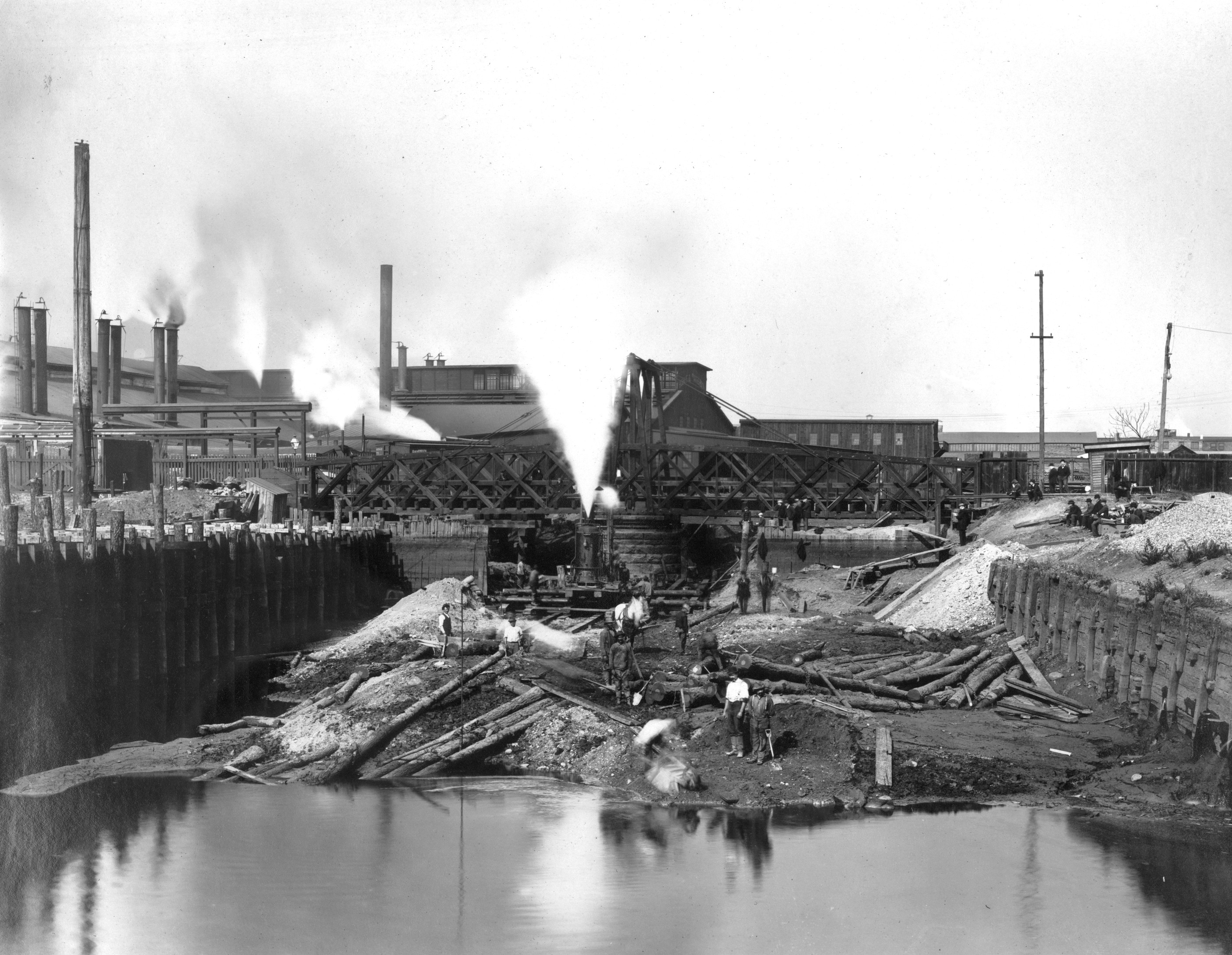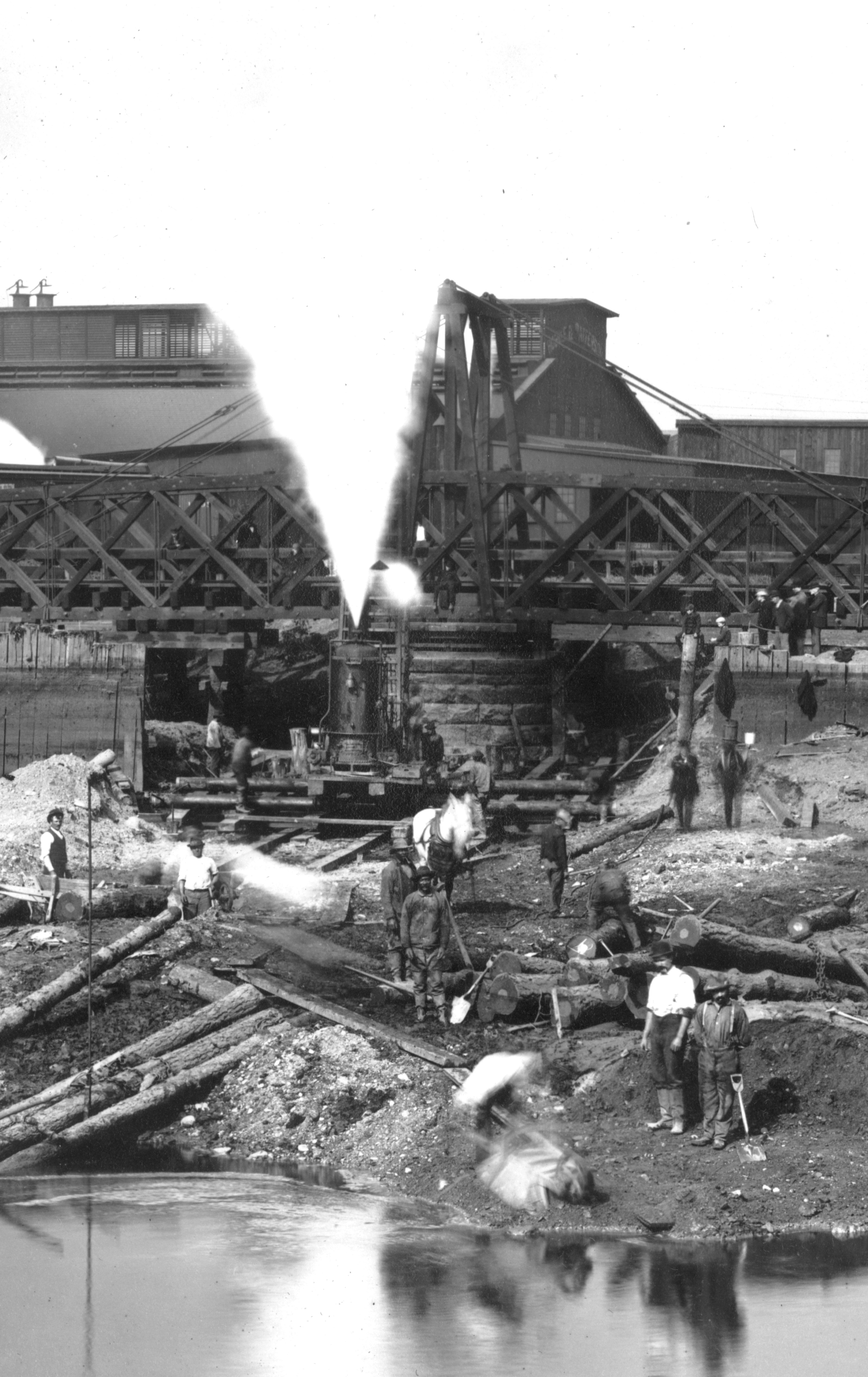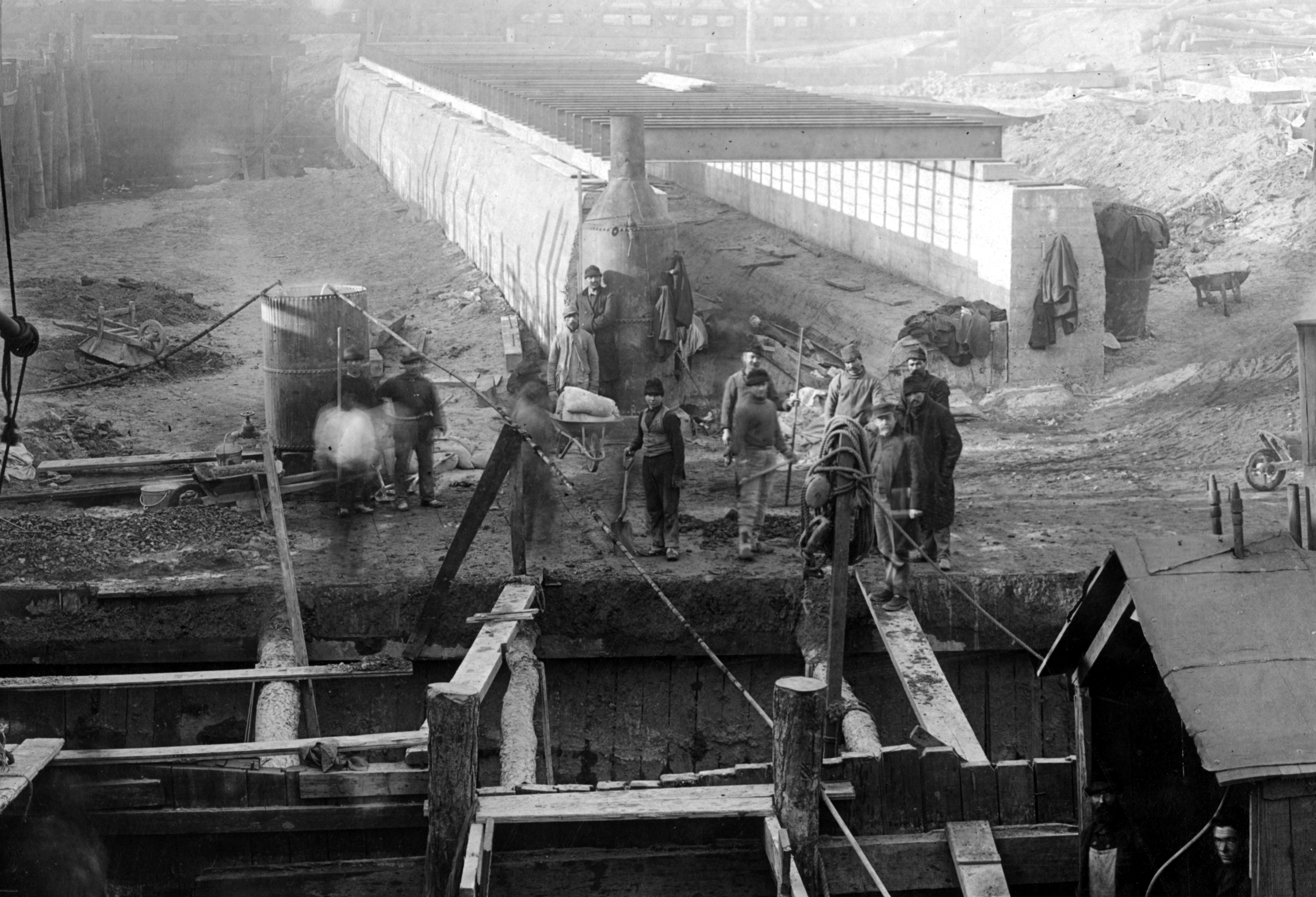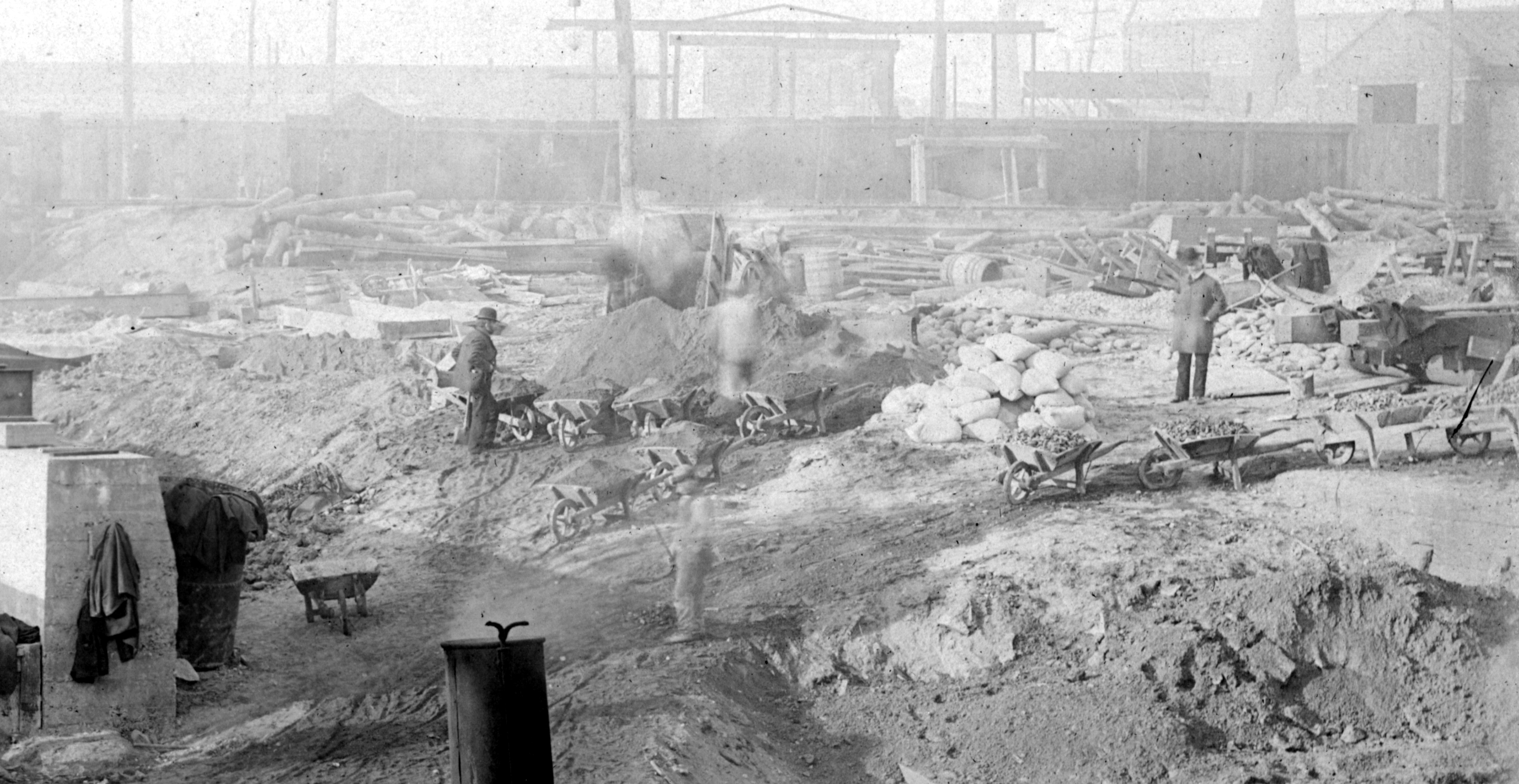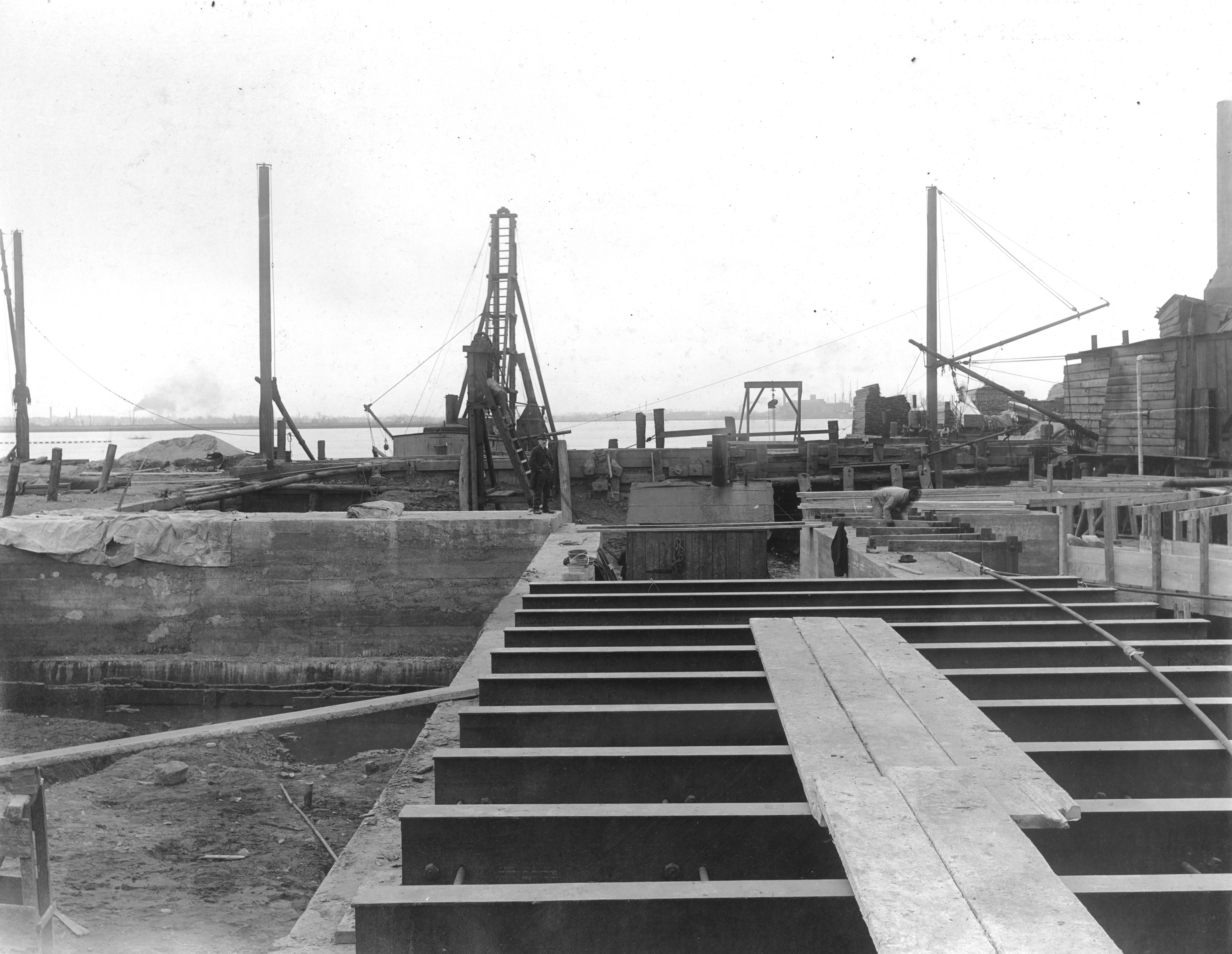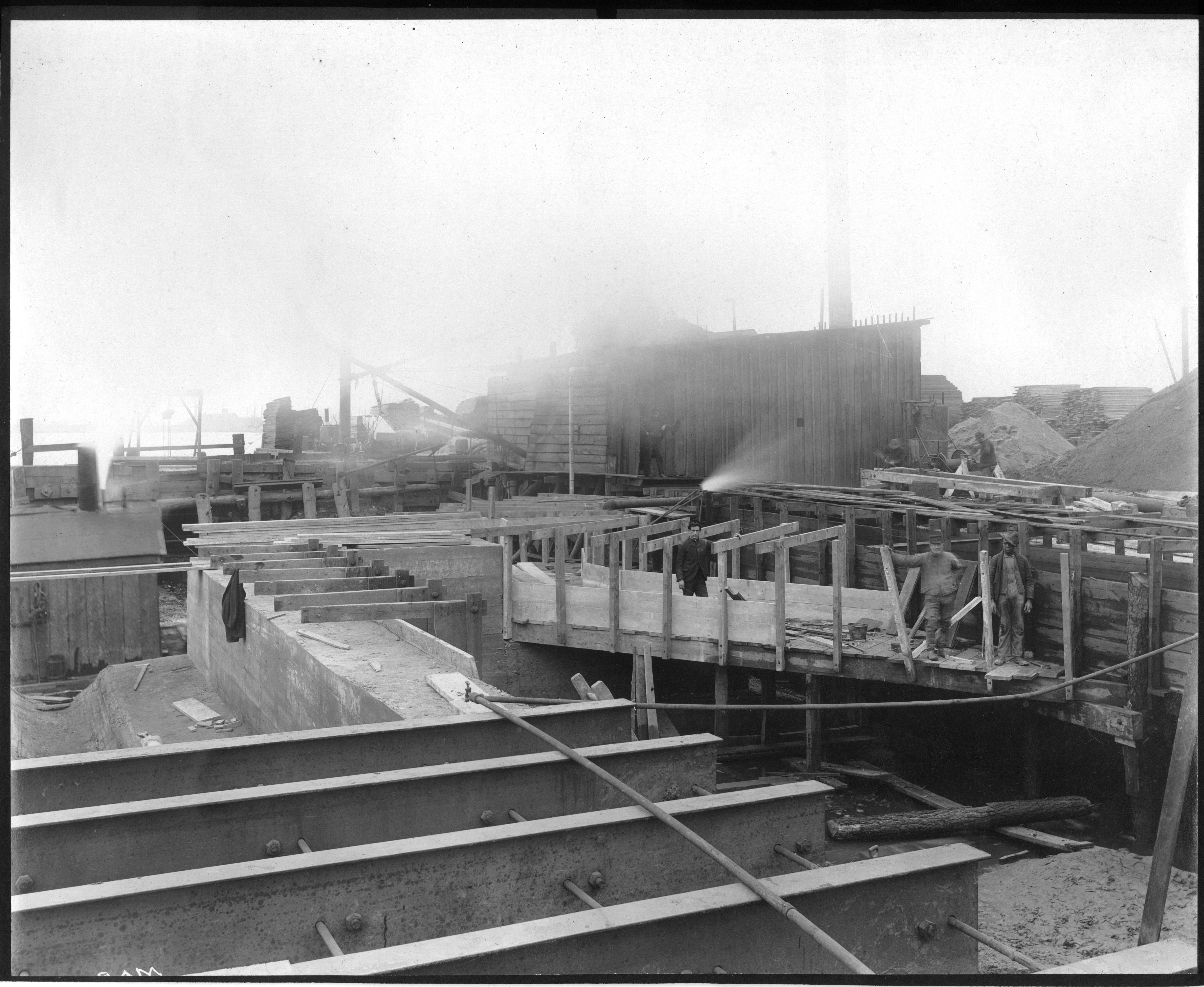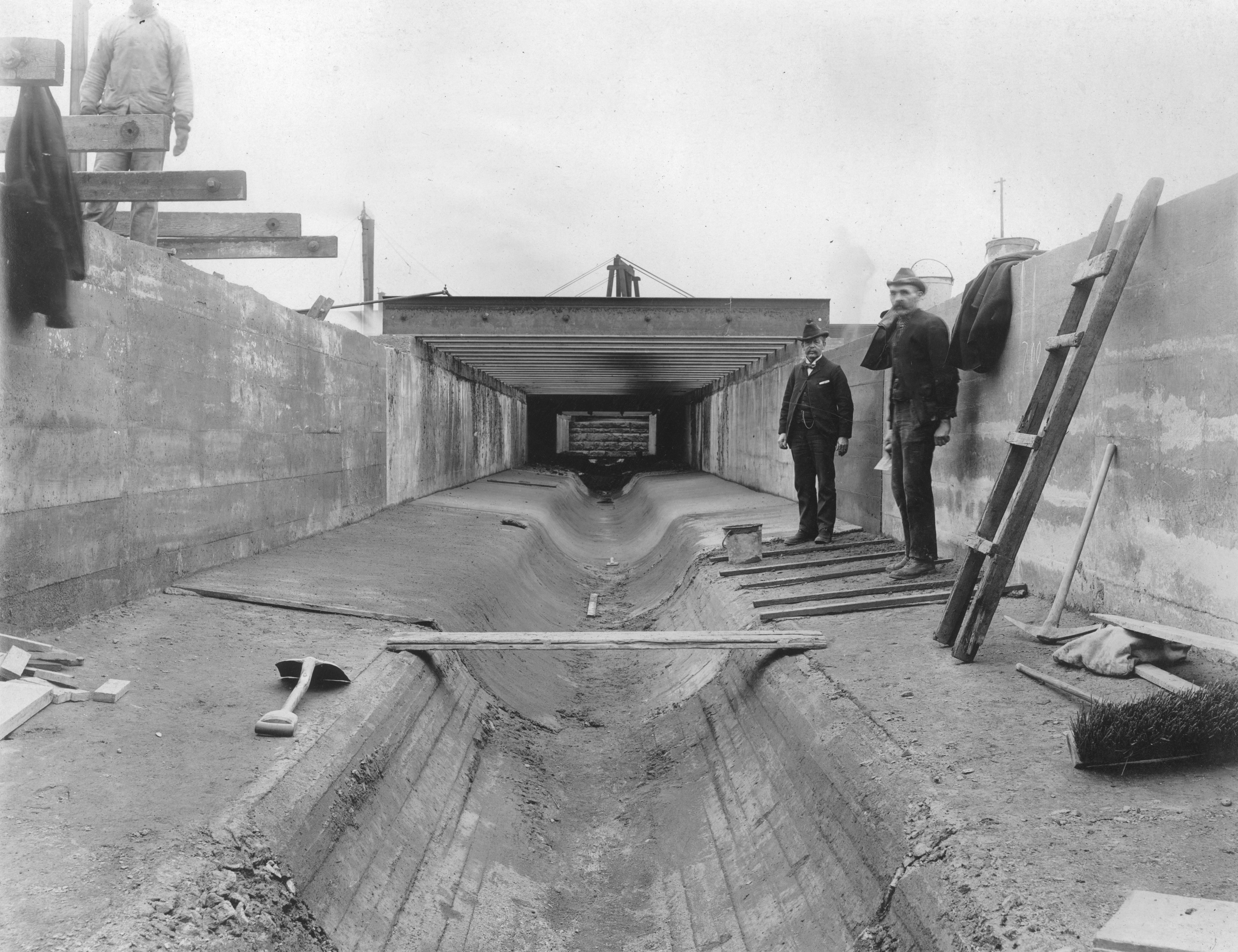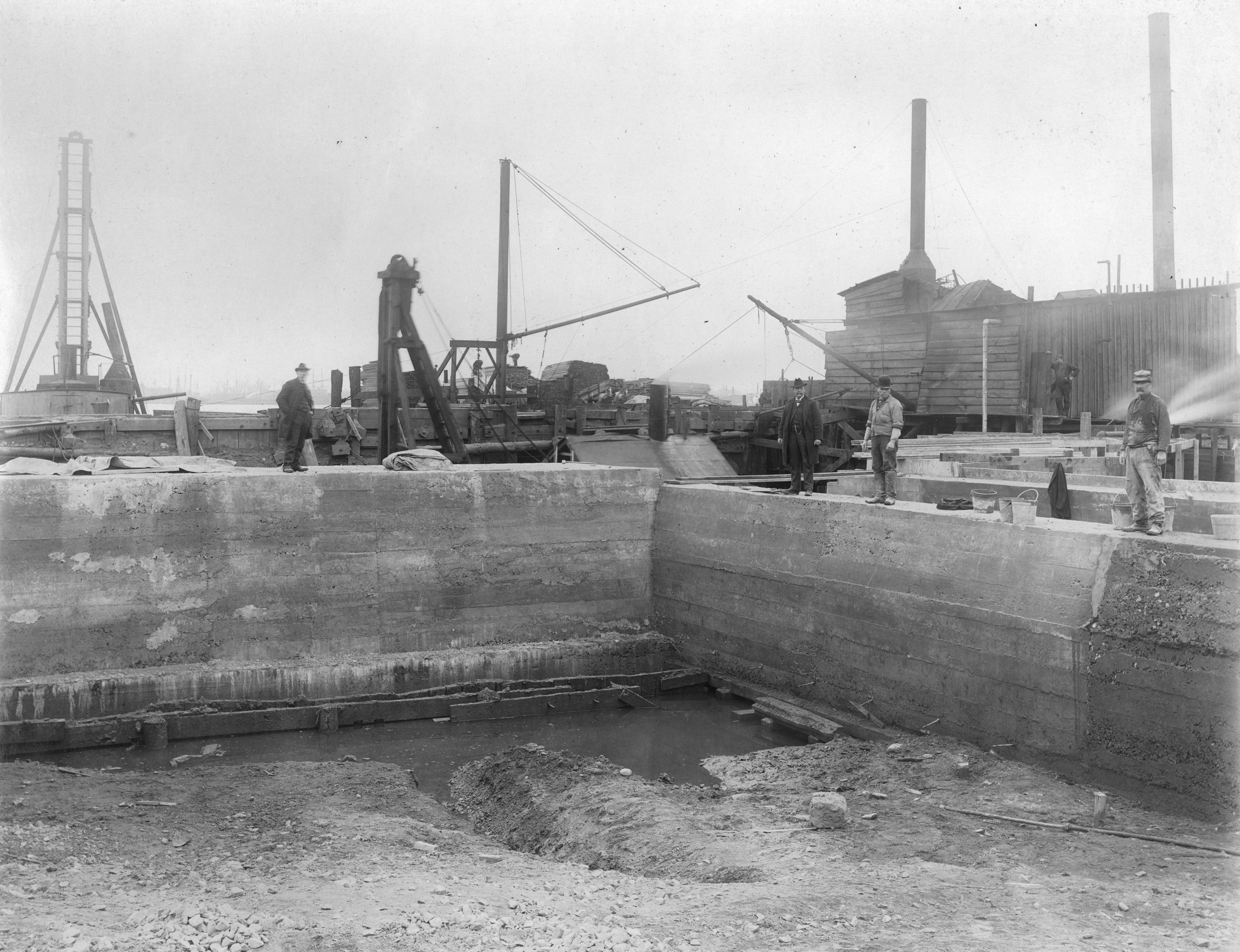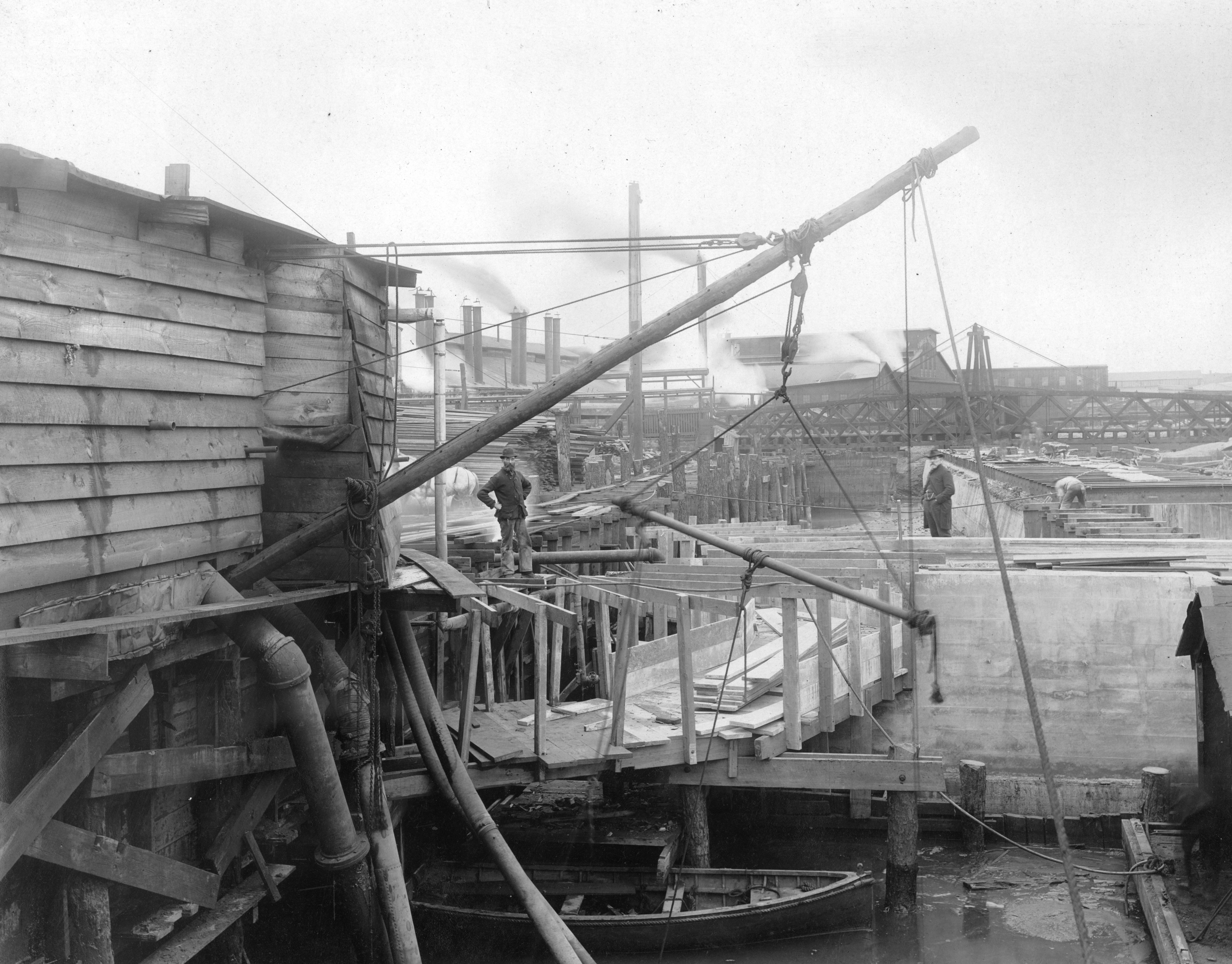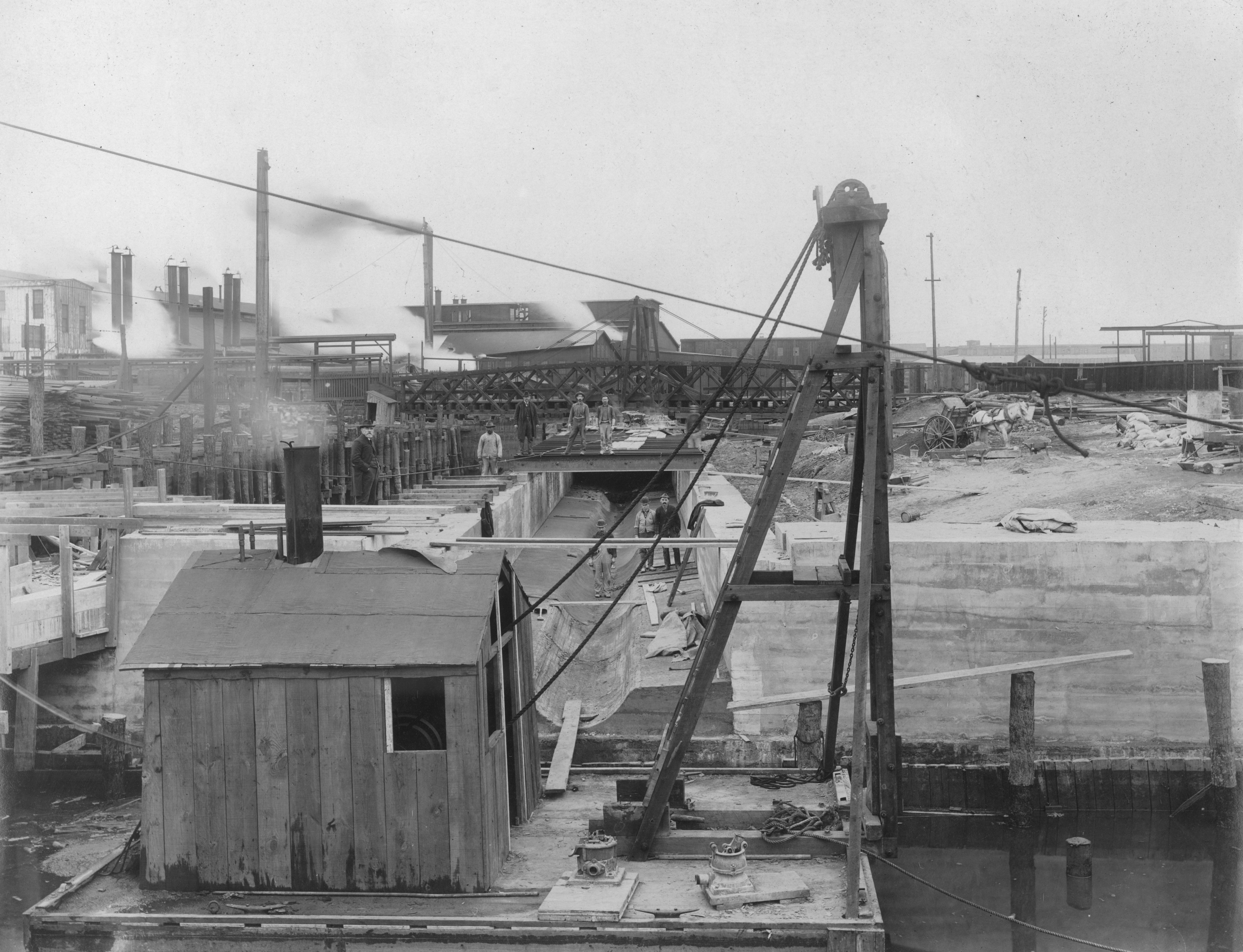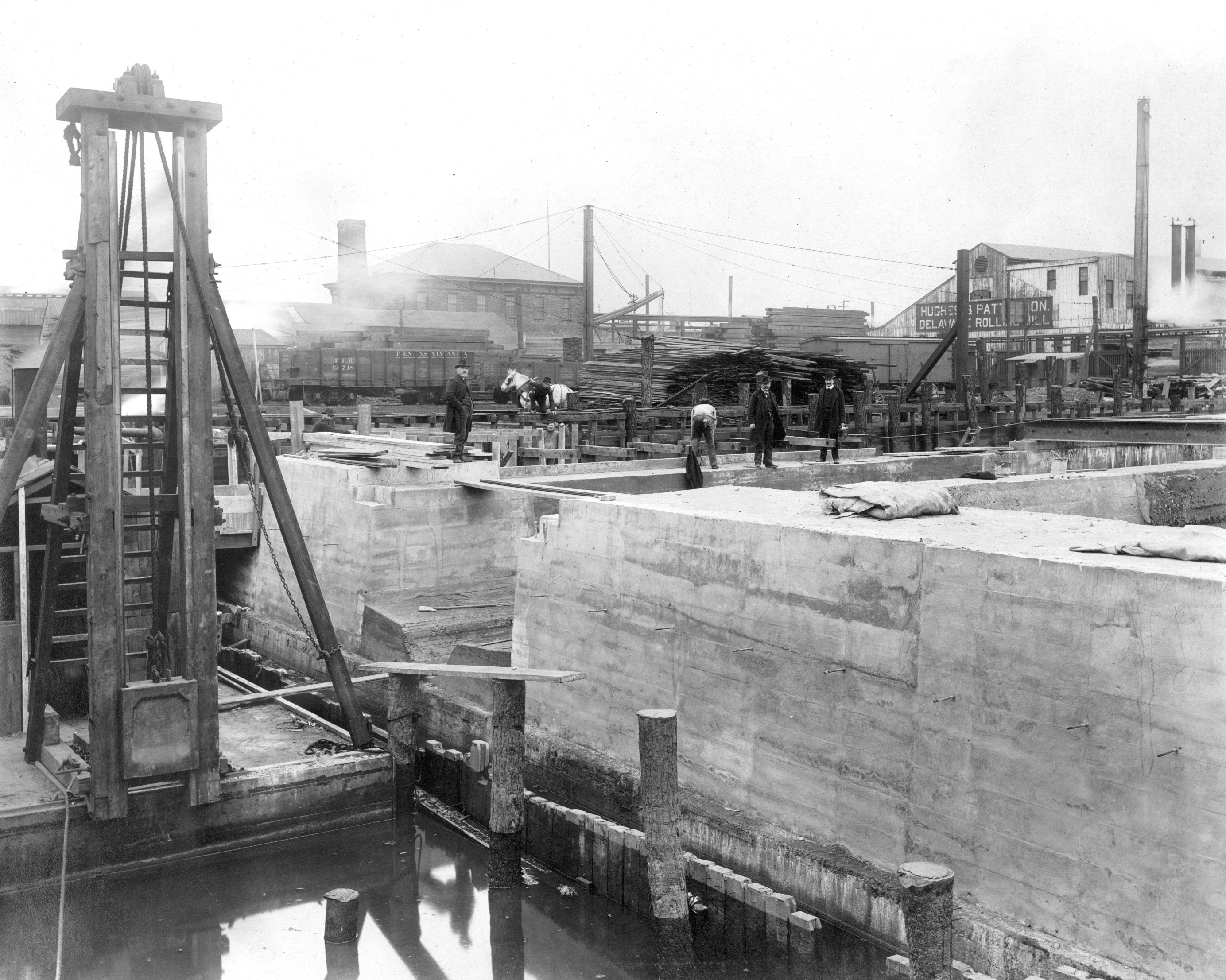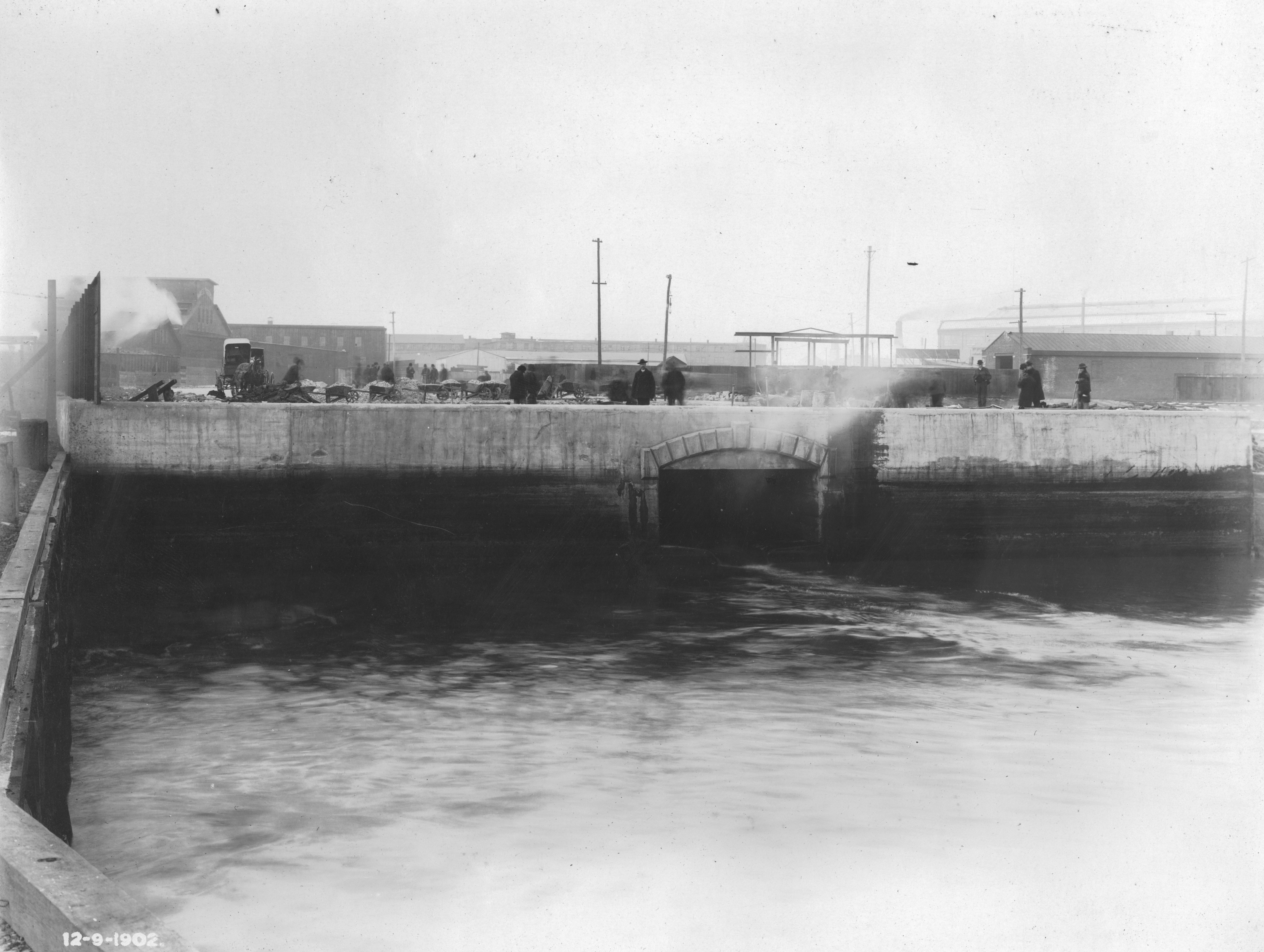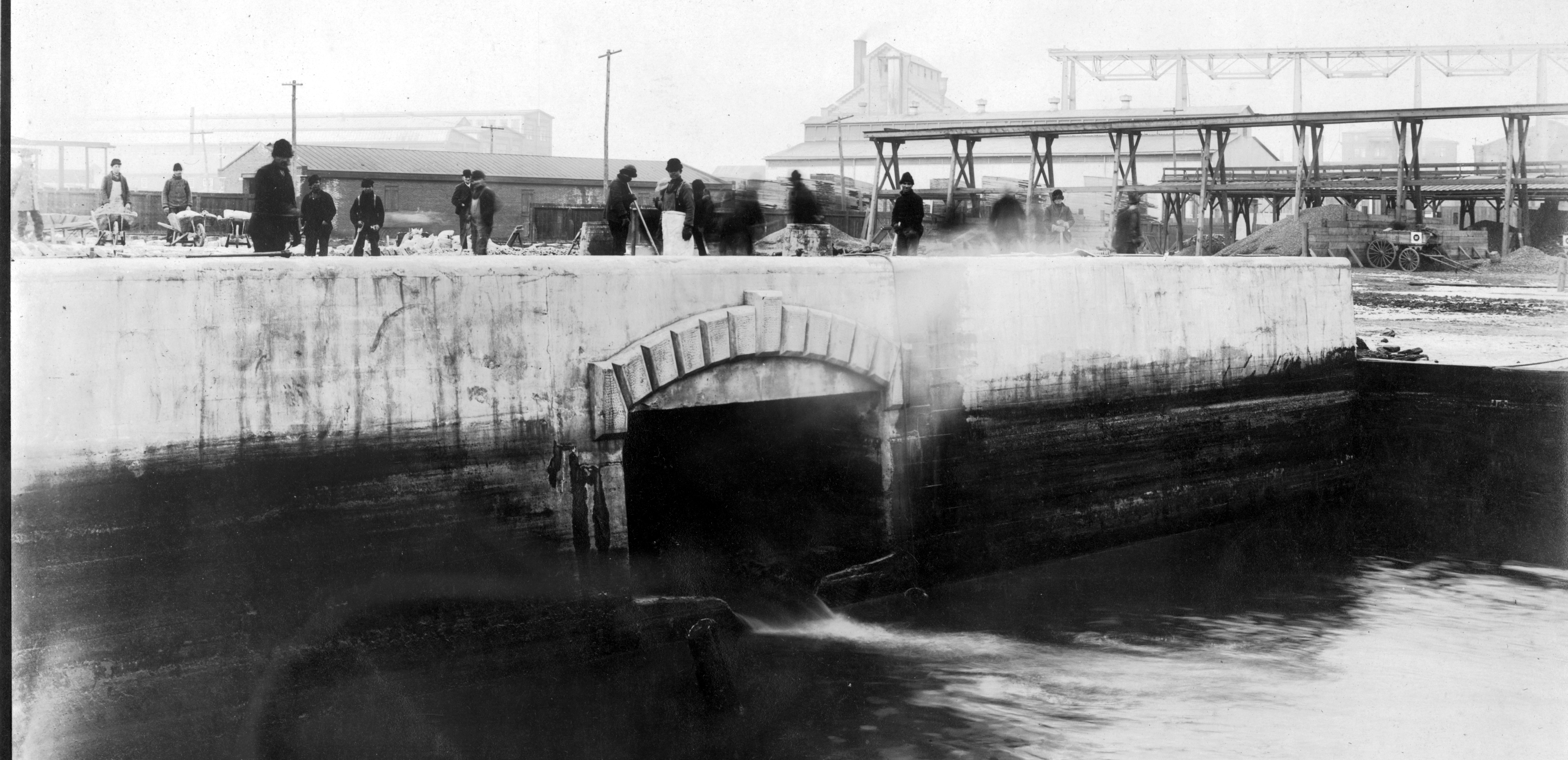This article was first posted on PhillyH2o in 2009. See updated information below.
In December 2008 I visited an archaeological dig in the Port Richmond neighborhood of Philadelphia, conducted by the URS Corporation of Burlington, New Jersey. A section of the 19th-century Aramingo Canal, built in the bed of a stream called Gunner’s Run, had been uncovered near the Aramingo Avenue interchange of Interstate 95. The work was paid for by the Pennsylvania Department of Transportation (PennDOT).
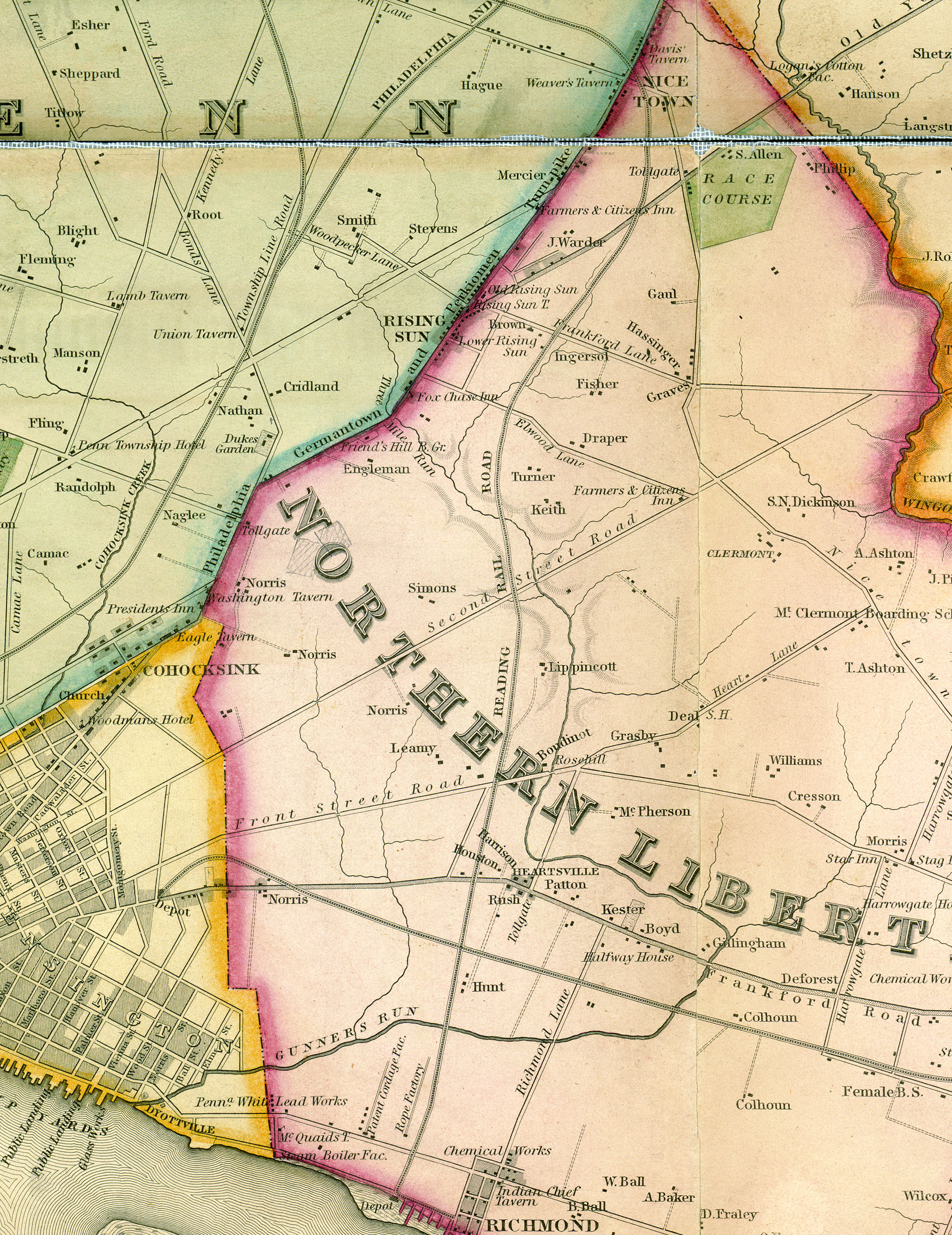
HISTORY The canal company, incorporated in 1847, was authorized to construct a canal in the bed of Gunner’s Run, a stream that emptied into the Delaware River at Dyottville Glass Works in Kensington. In the History of Philadelphila 1609-1884, authors J. Thomas Scharf and Thompson Westcott described the canal: “It was believed that by widening and deepening the stream a grand depot for trade could be established near the [Richmond Branch of the Philadelphia and Reading] railroad with docks and basins, and that the ground available on either side of the creek could be made available for wharves, warehouses, etc….The work turned out to be useless. A great deal of money was spent upon it. The amount of business done was found insufficient to pay expenses, and for many years afterwards the so-called canal was considered a nuisance.”
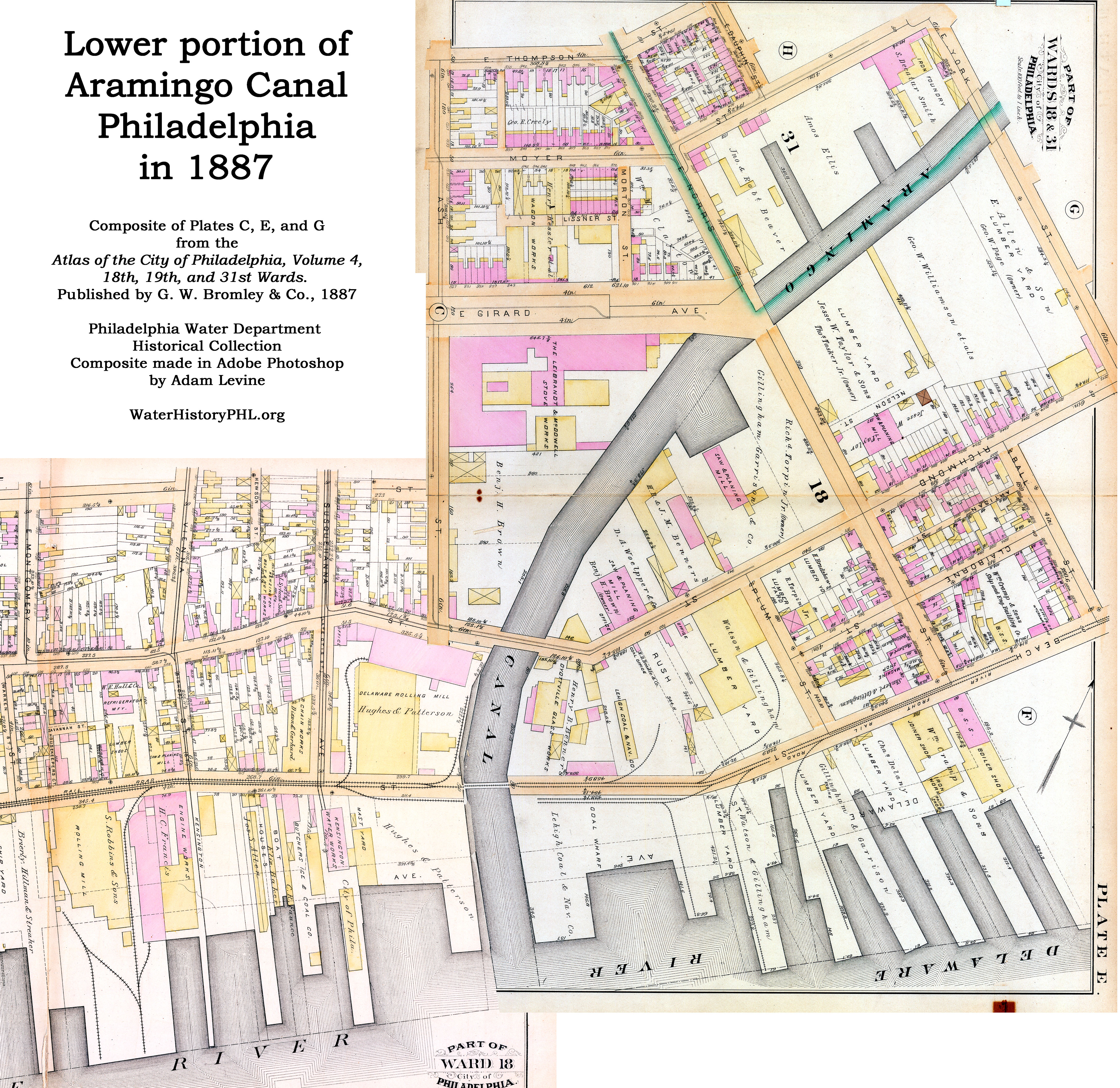
The creek-turned-canal became so polluted that, beginning about 1900, it was covered over and converted into a combined sewer, as shown in the photos below from the PWD Historical Collection. Aramingo Avenue now runs over part of the canals’ former route.
The modern photos are reproduced courtesy of URS, whose archaeological team was headed by Anthony McNichol and included Doug Mooney (Project Manager), Jeff Harbison (Acting Supervisor), and a field crew of Lisa Geiger, Cristy Wallover, Alex Agram and Alex Devries. As shown in the color photos (taken by Geiger), URS uncovered the wooden cribbing that formed the walls of the canal, and the brick and concrete foundation of a locker room and toilet facility that was built by the Cramp Shipyard on top of the old canal bed, and later demolished.
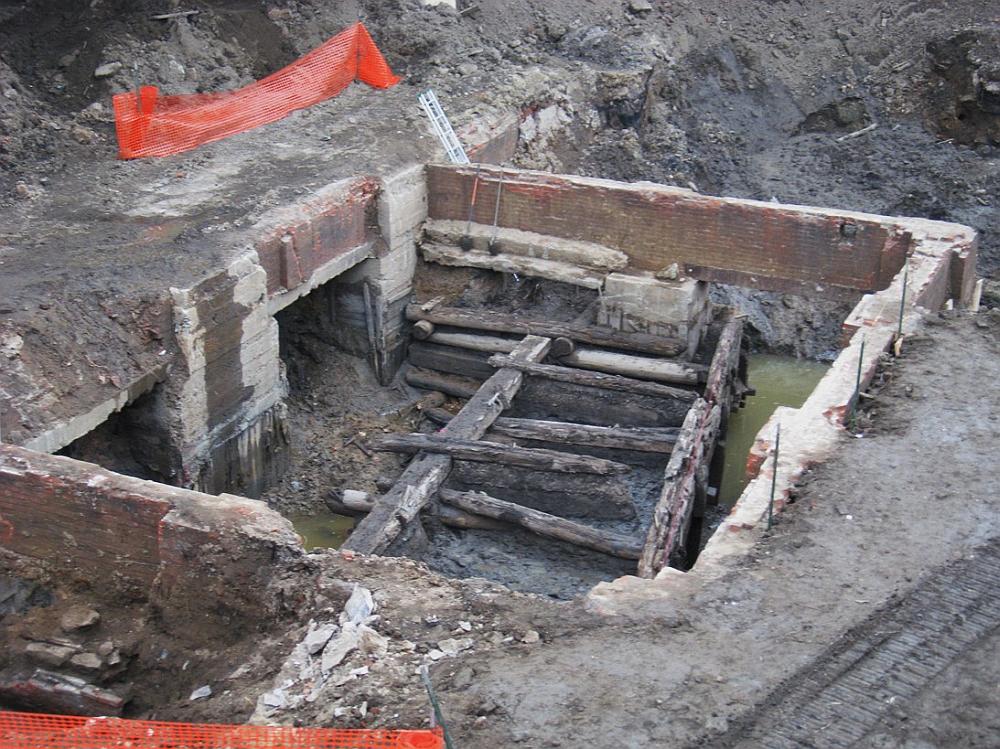
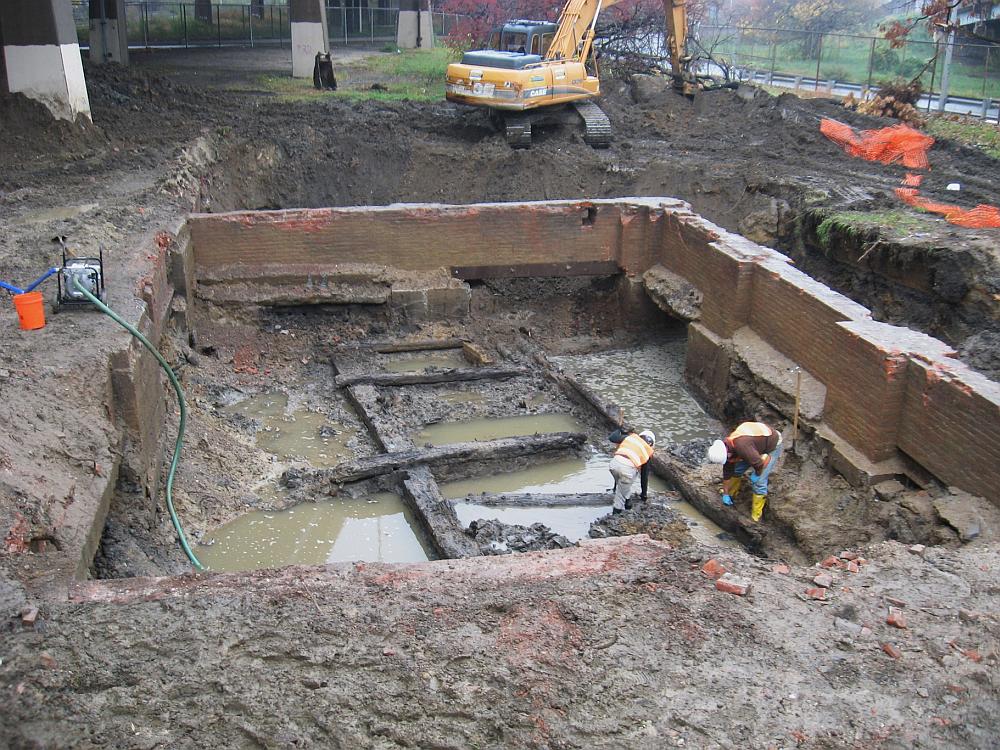
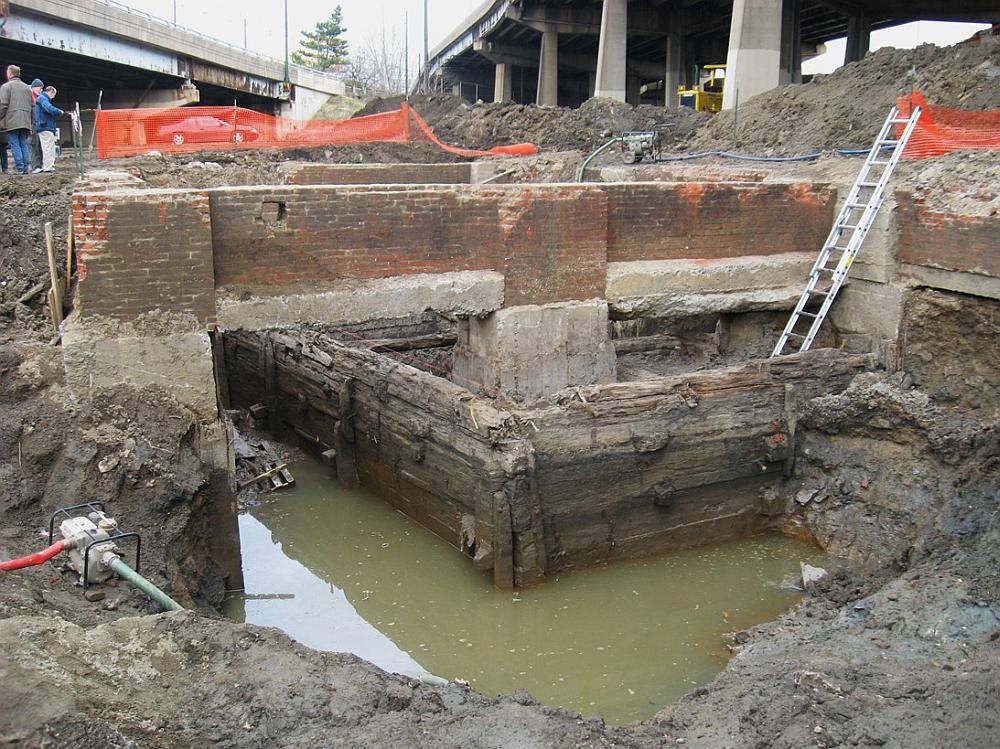
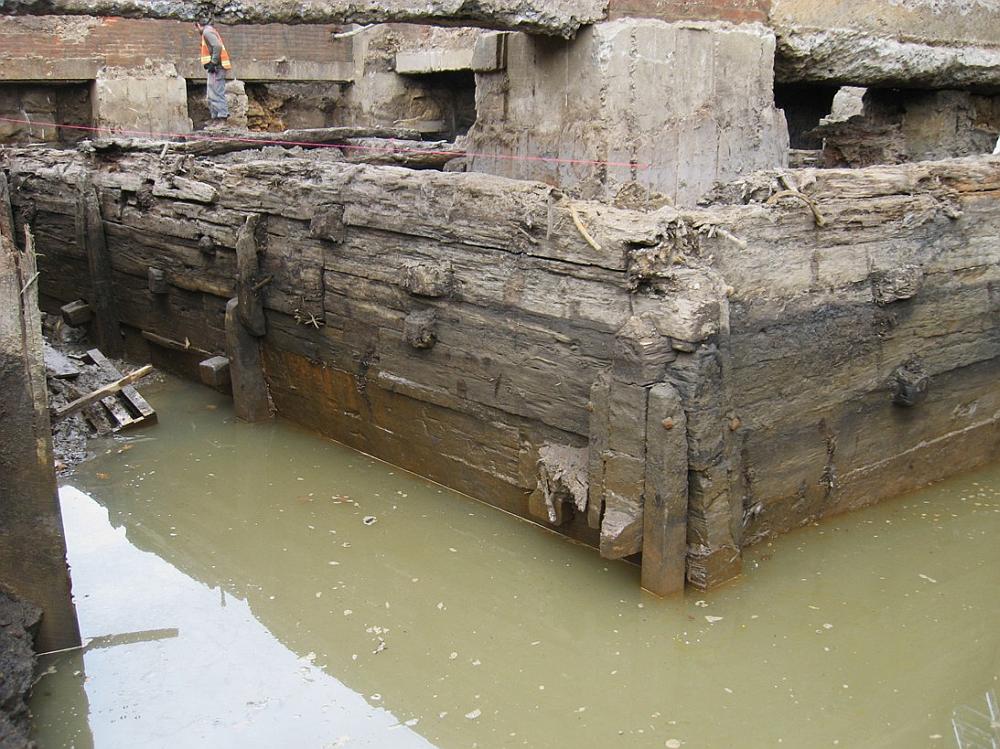
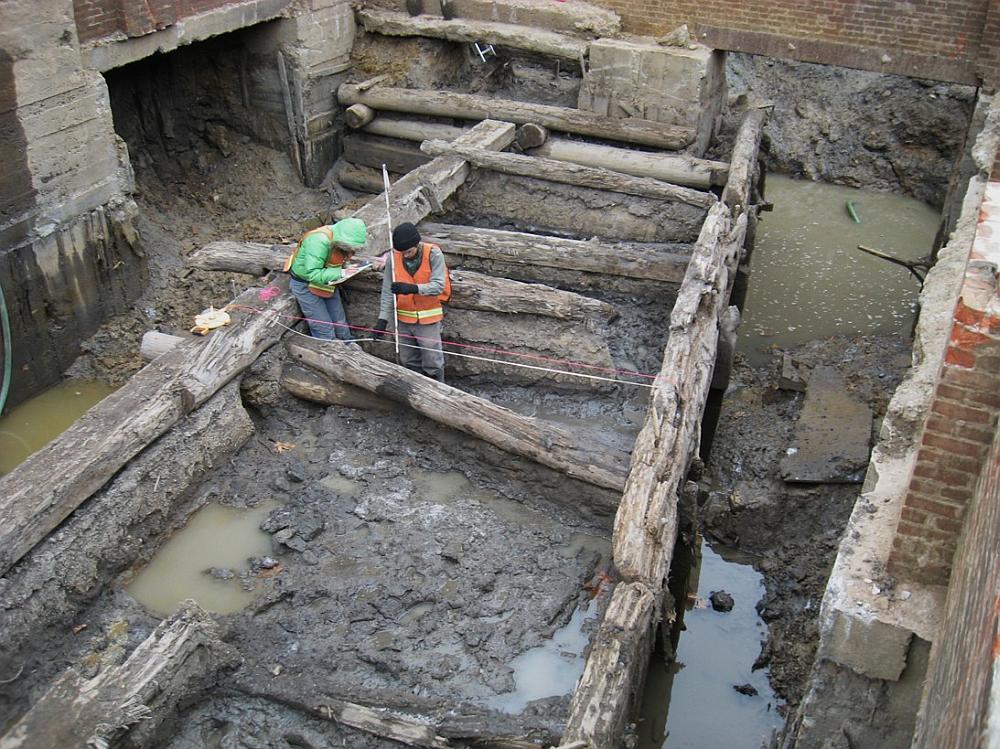
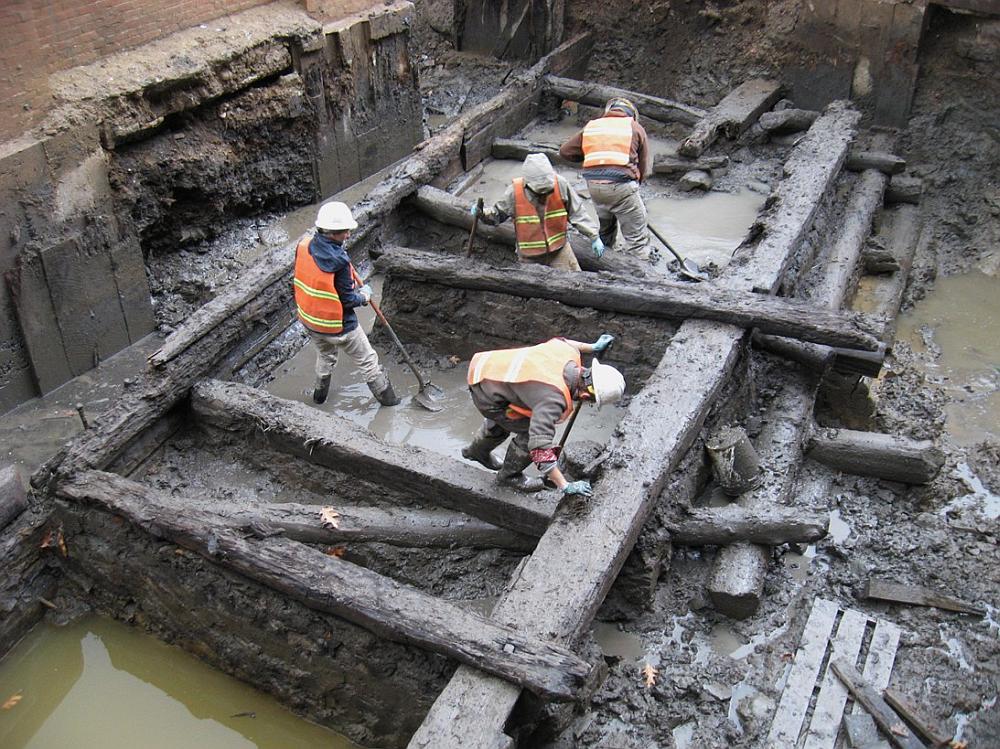
Photographs by Lisa Geiger
In June 2009 A. Leonard Pundt, District Quality Improvement Coordinator for PENNDOT, offered his own compilation of maps and photographs of the Aramingo Canal excavation. Click here to download a PDF copy of that presentation.
Fifteen years later… Update in 2023
Much has been done since I first wrote about this project in 2009. More information about the Aramingo Canal excavation, and other archeological work done in relation to the I-95 reconstruction, is now available both virtually, at the wonderful interactive website, Digging I-95, and in person, at the I-95 Archaeology Center at 900 E. Columbia Avenue. Call 215-982-2792 to check the center’s open times, or to make an appointment to visit. The site is sponsored by PennDOT, the Federal Highway Transportation Administration, and AECOM, which acquired URS in 2014.
See also this page from the Workshop of the World website, which discusses the archeology along the Aramingo Canal corridor and includes a variety of supporting material, including rare old maps.
Note on the PWD Photos The scans were made from vintage prints that were a little dirty. The resulting images are grayer than I like, but when I tried increasing the contrast I lost details in the shadows and bright areas. The cropped details are actually scanned at higher resolution (600 dpi) than the full pictures (most of which are scanned at 300 dpi). I would never do this today, but then I was probably trying to save hard drive space, which was at a premium 20 years ago. –Adam Levine, 14 NOV 2023

